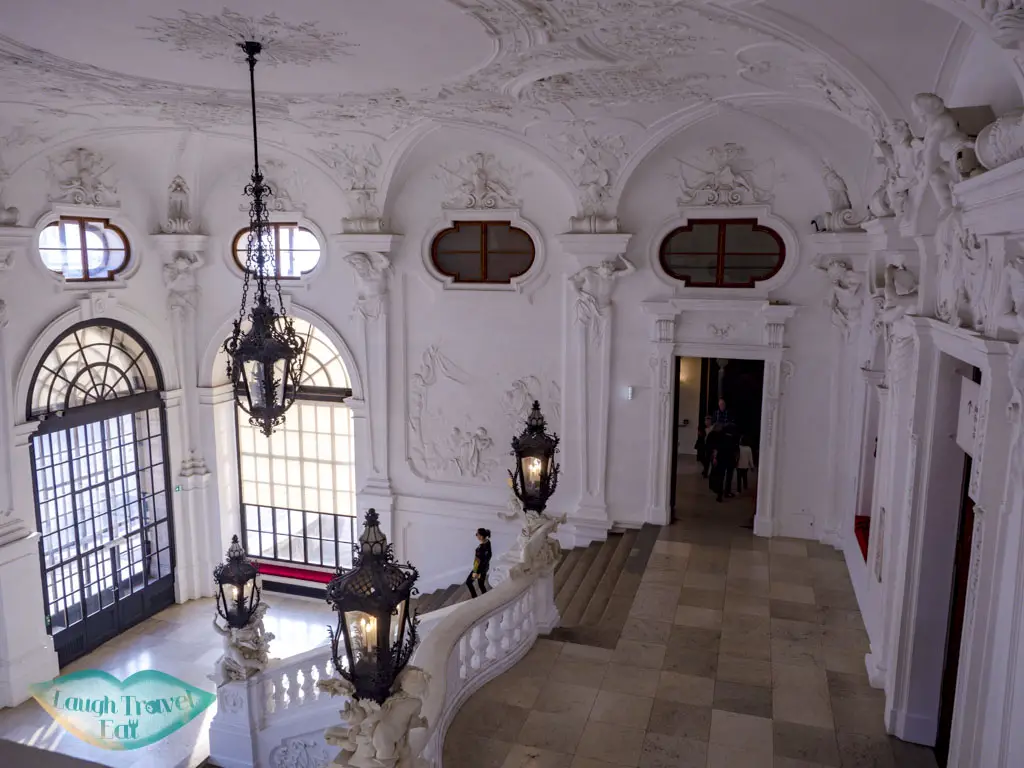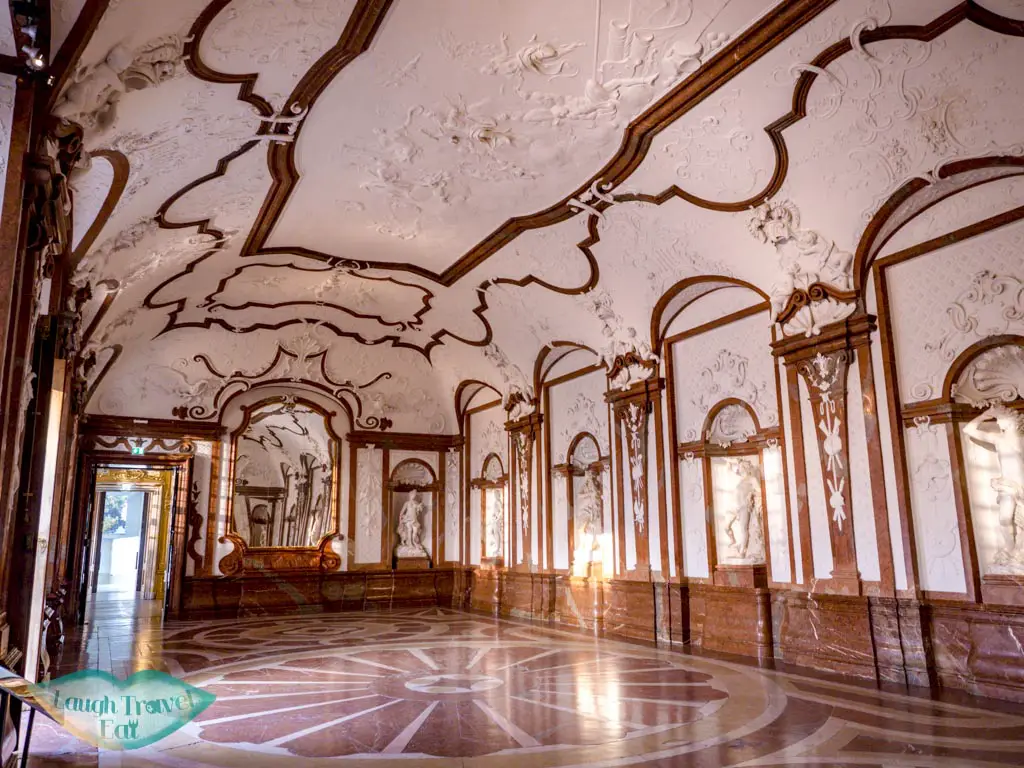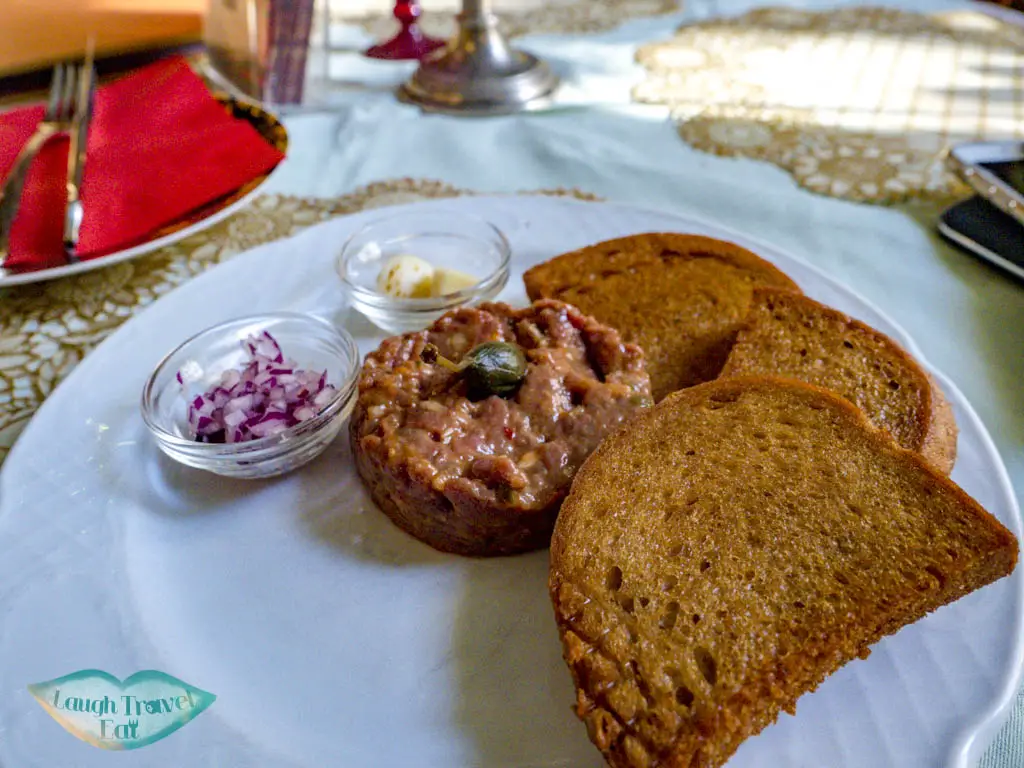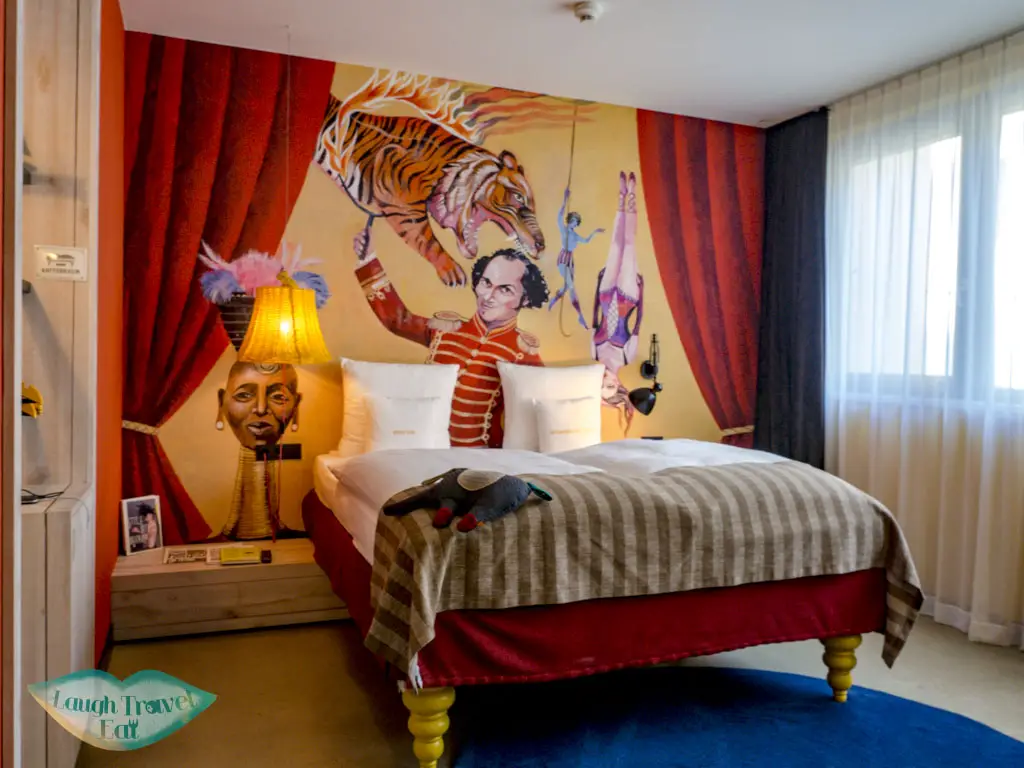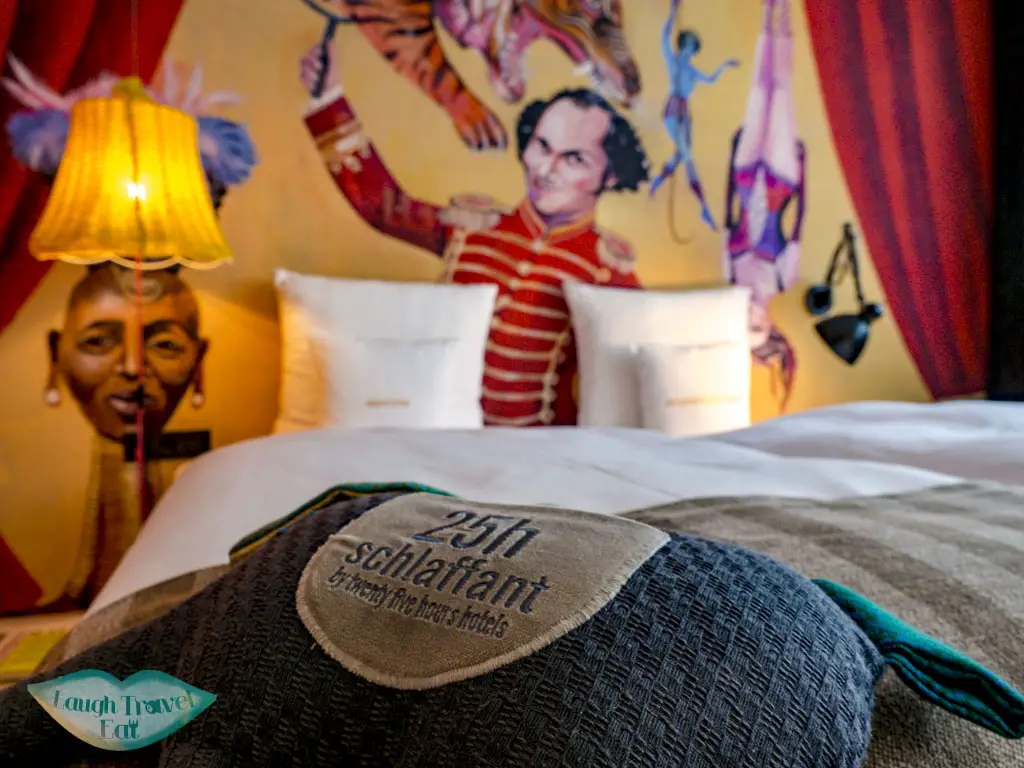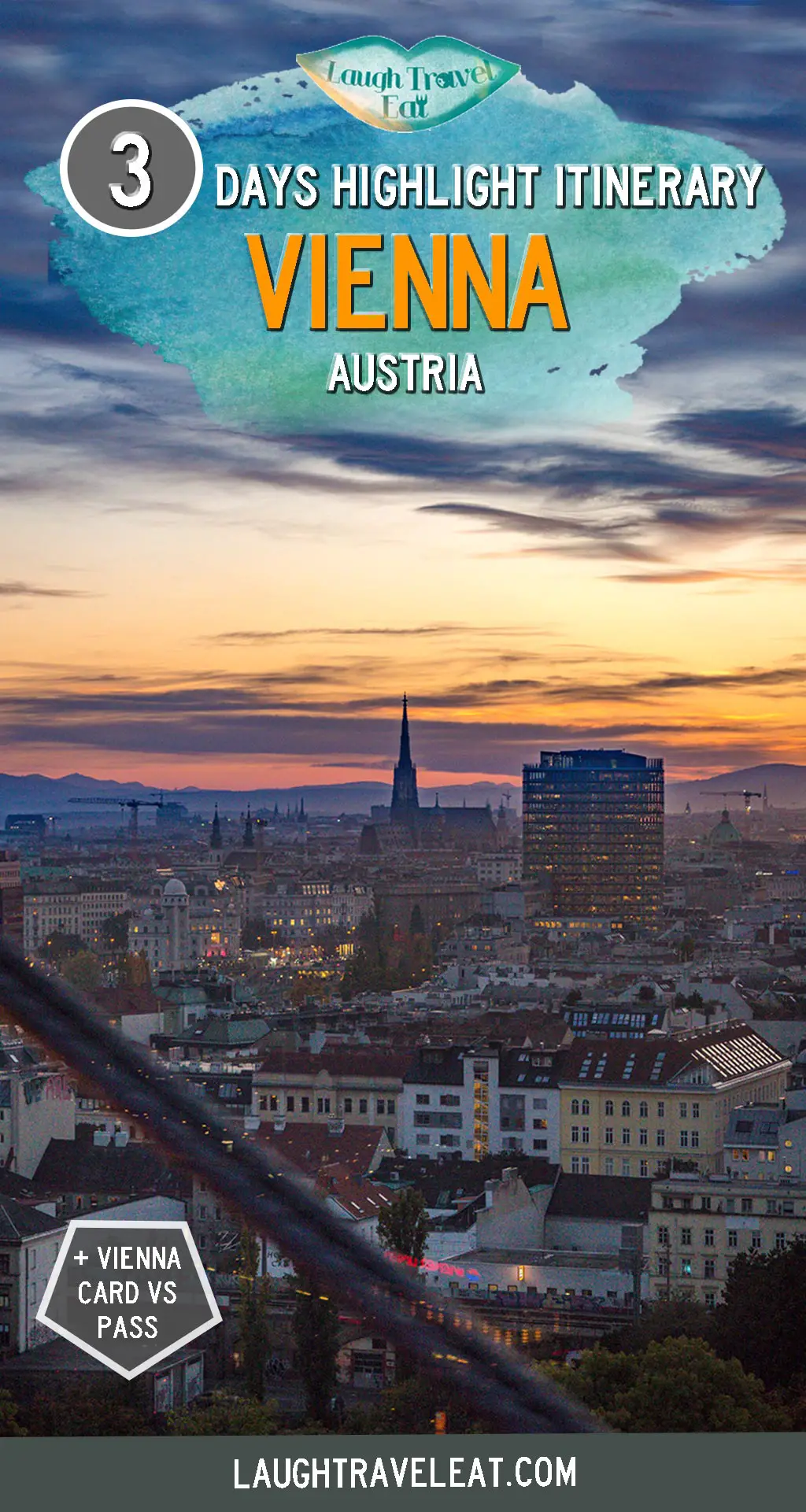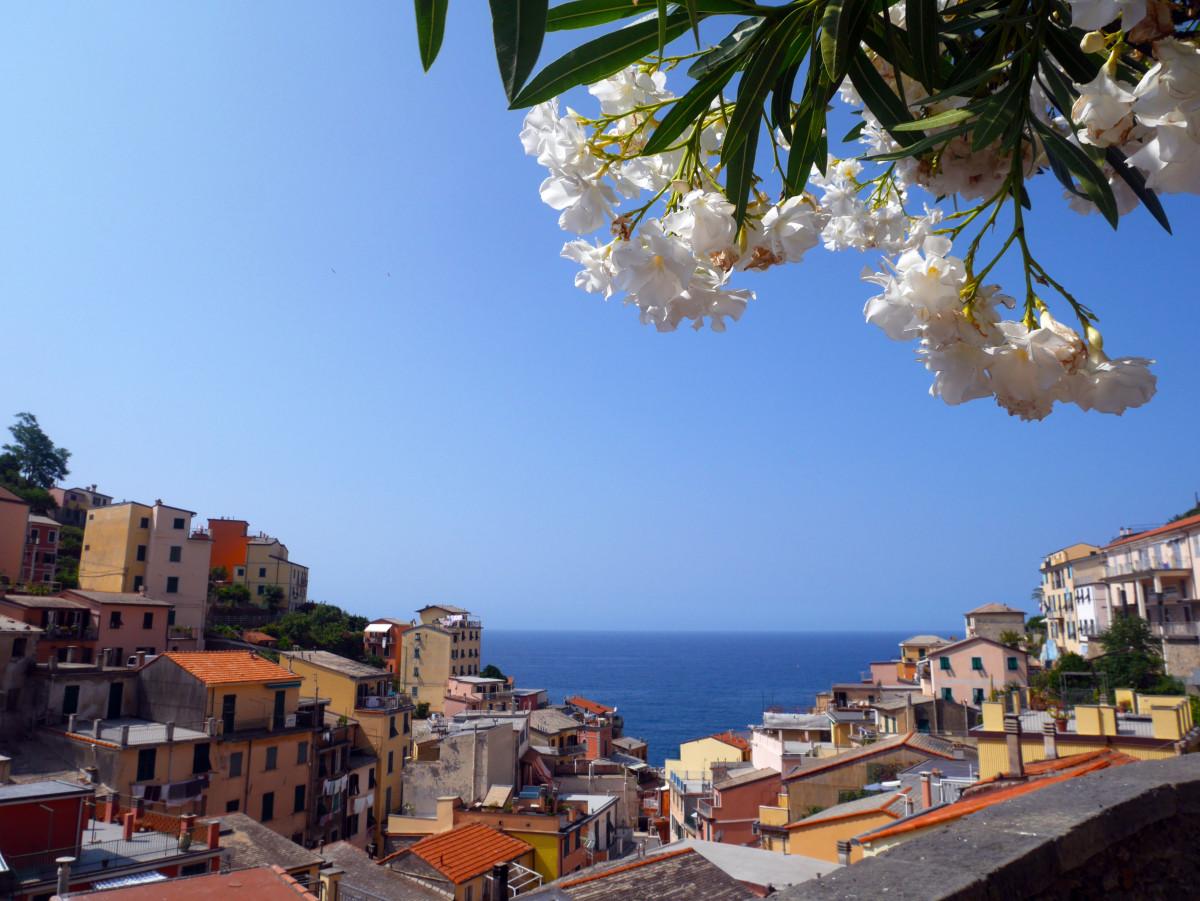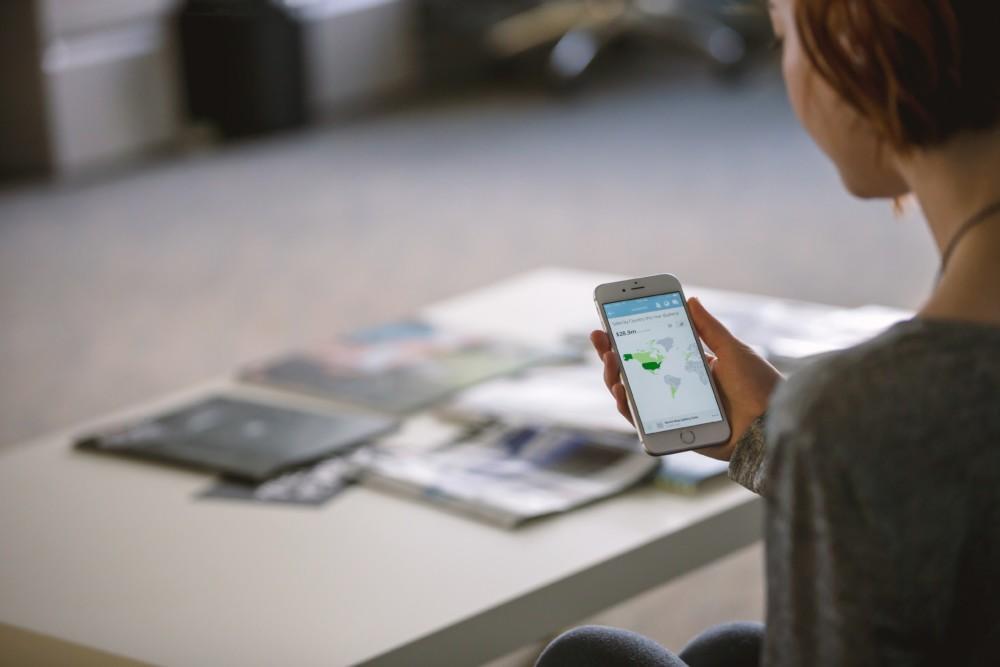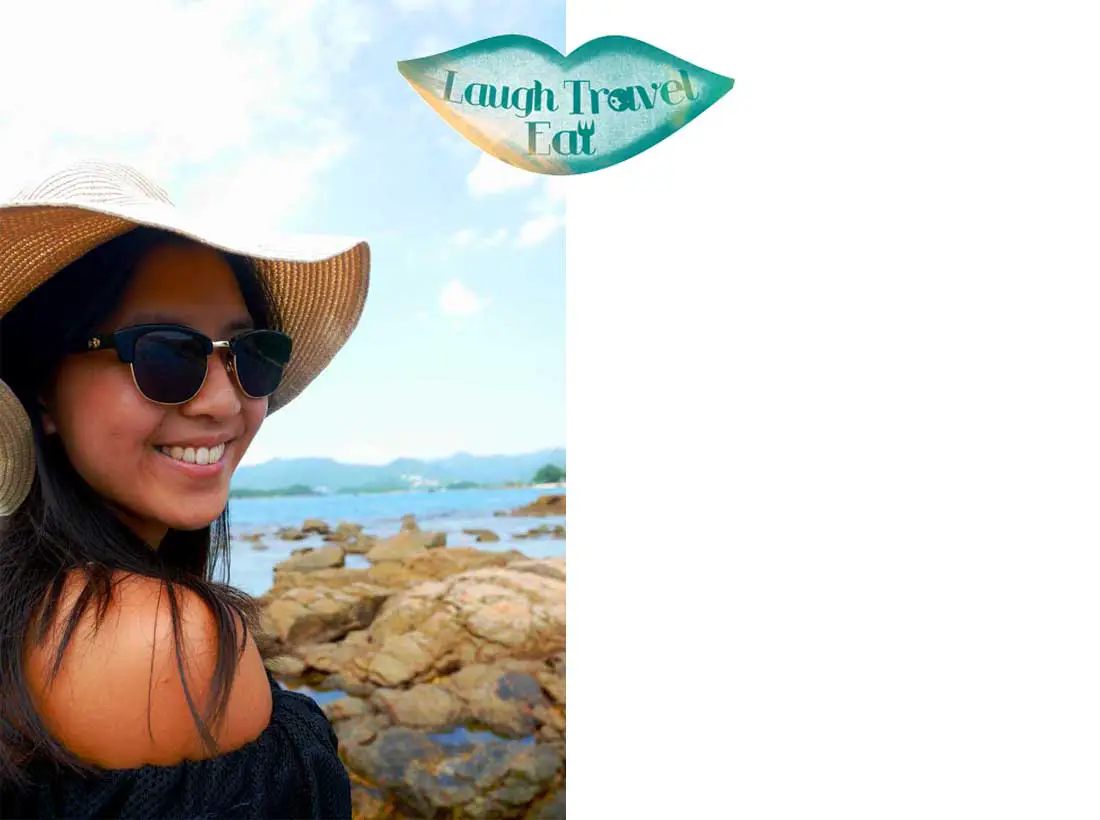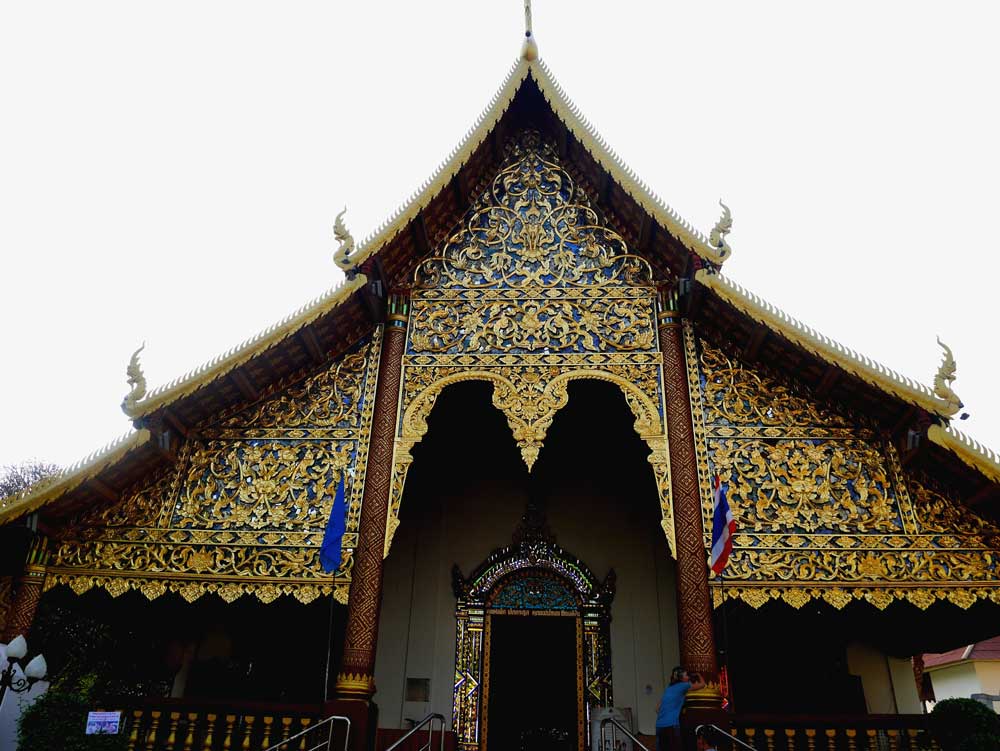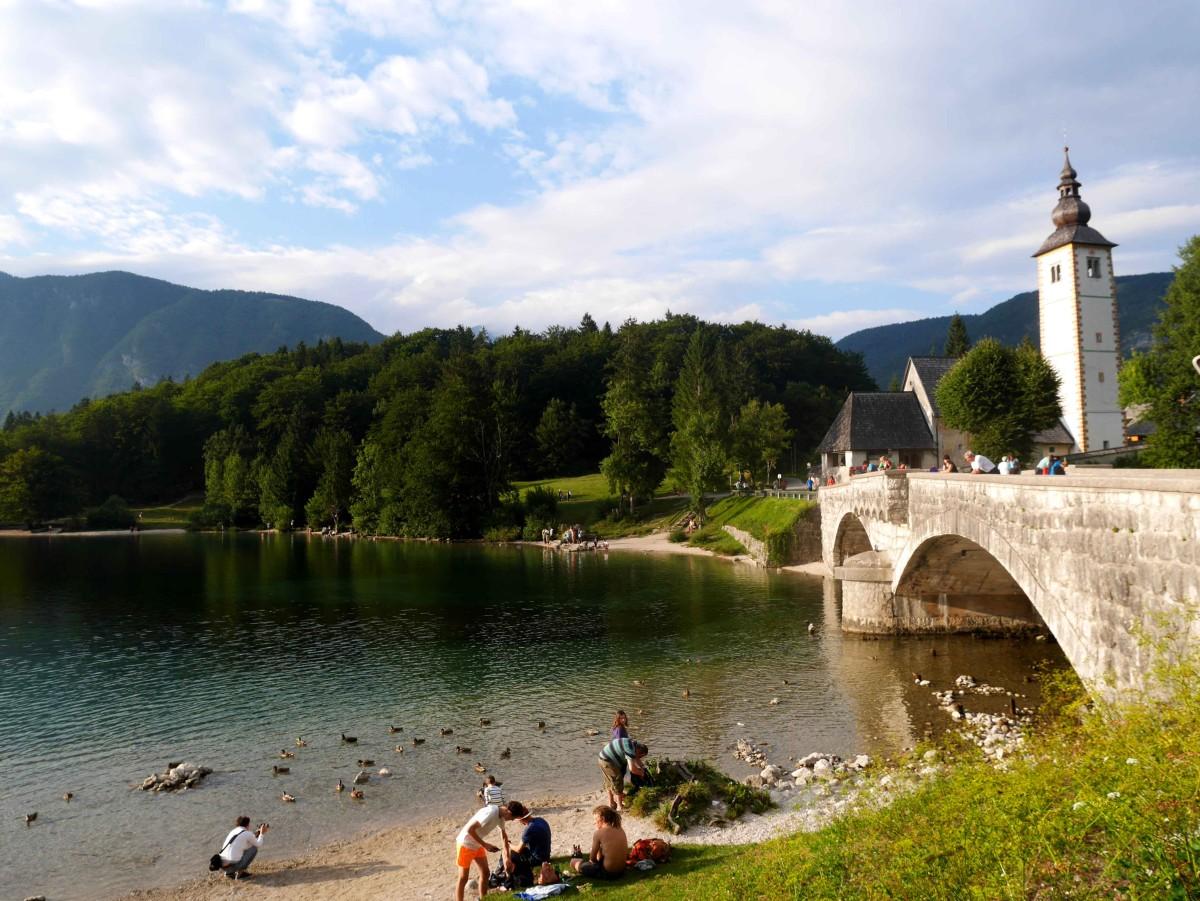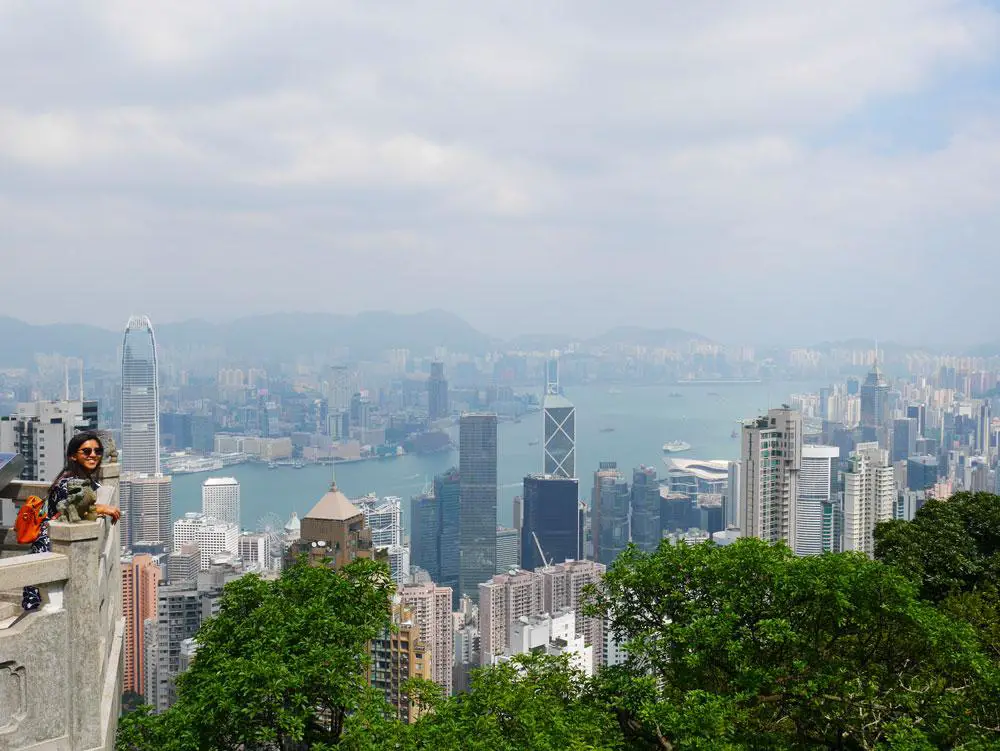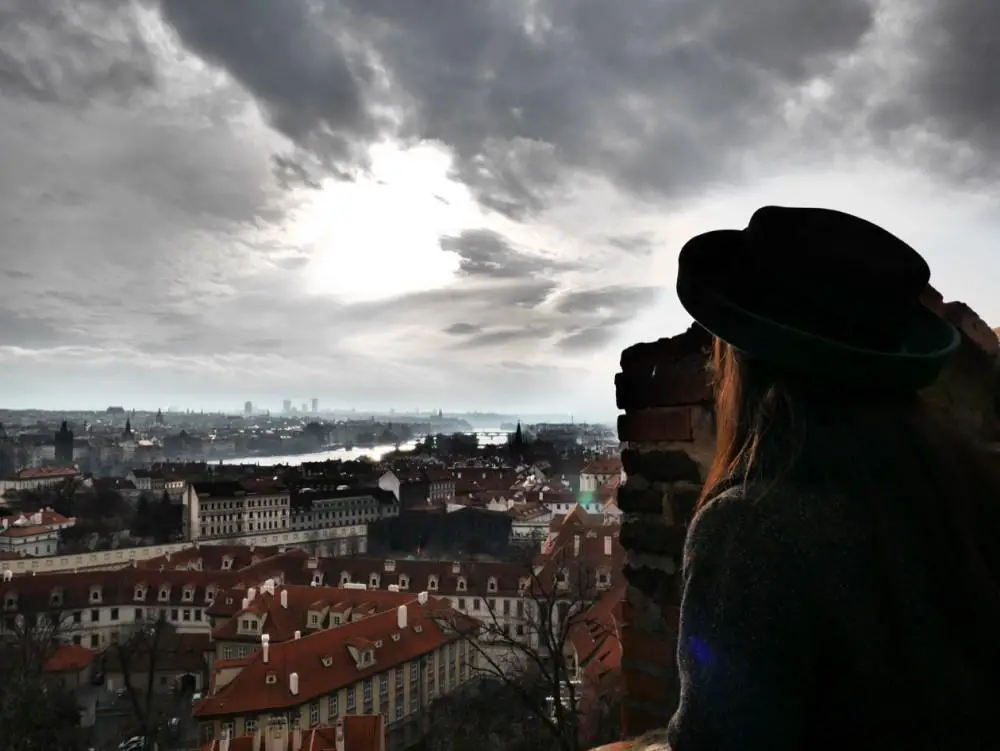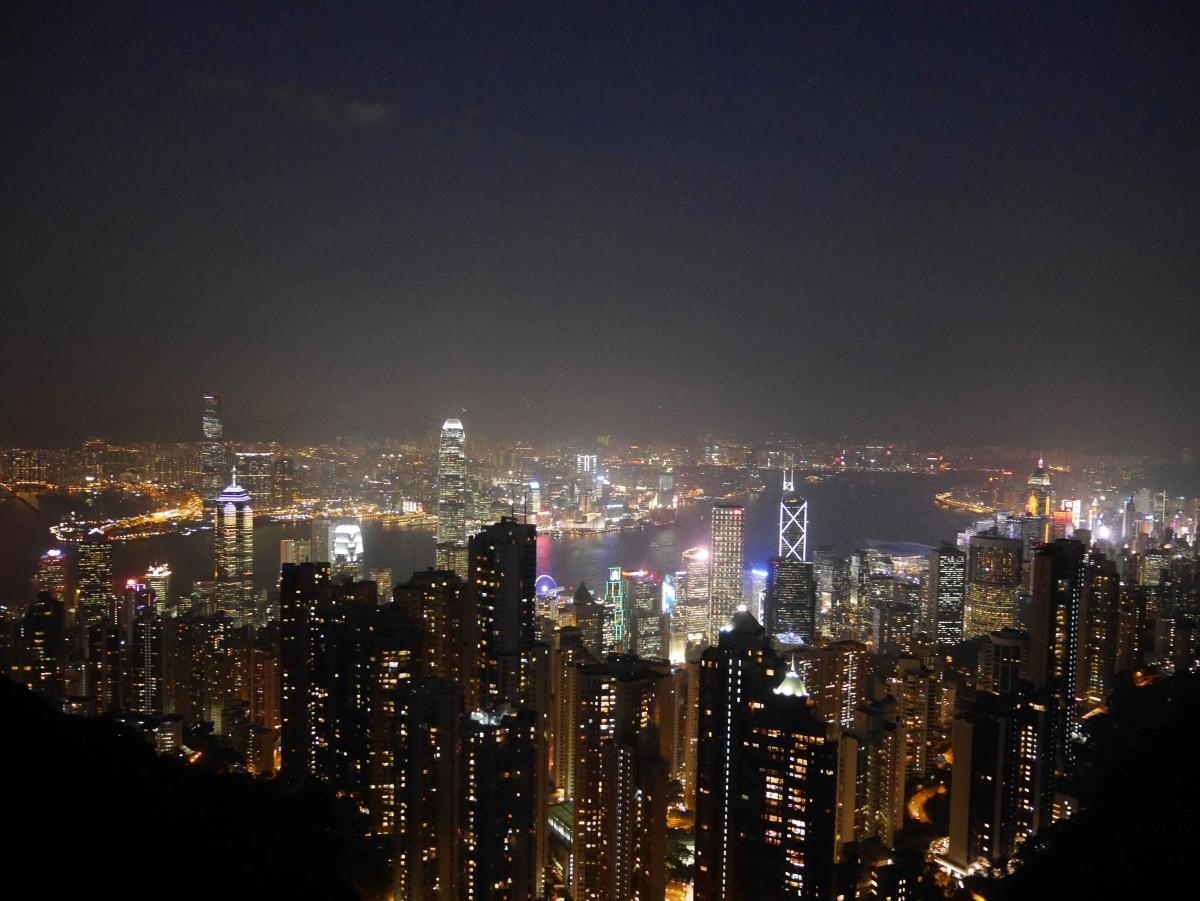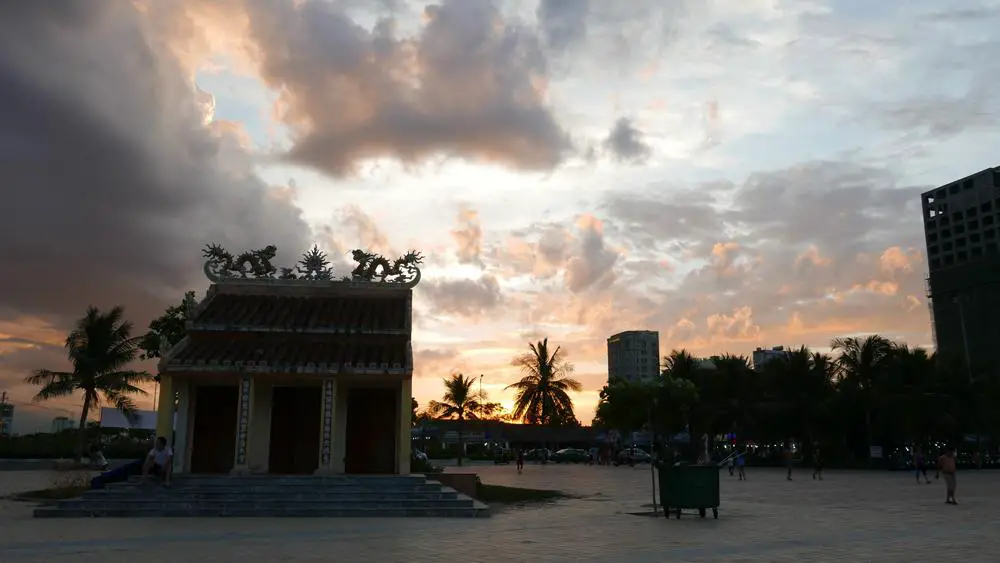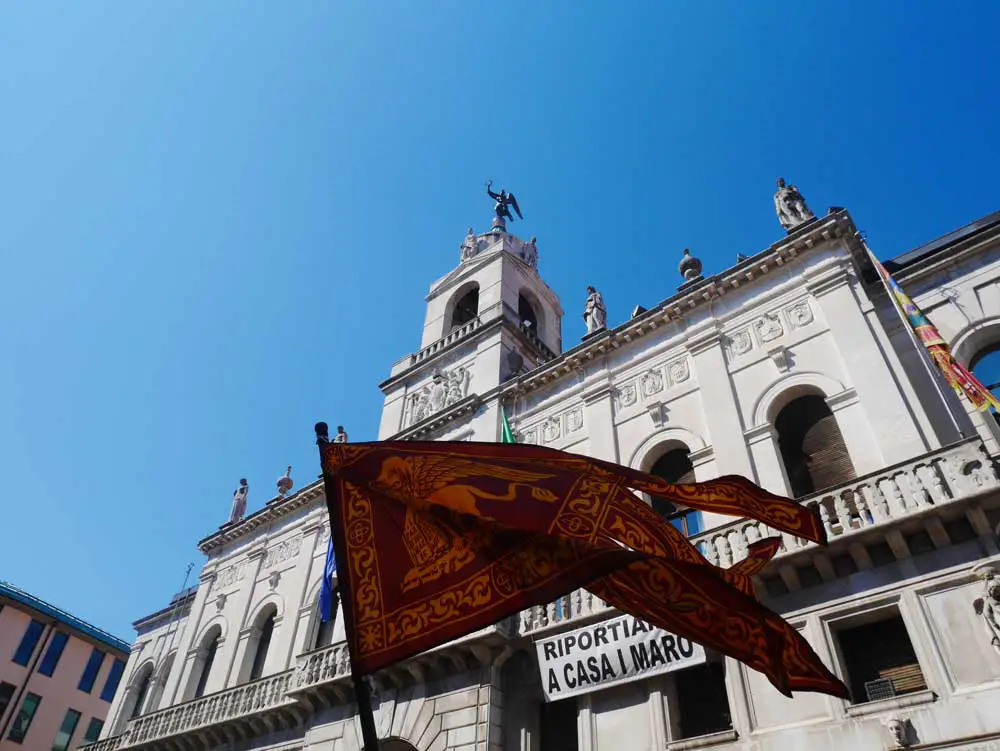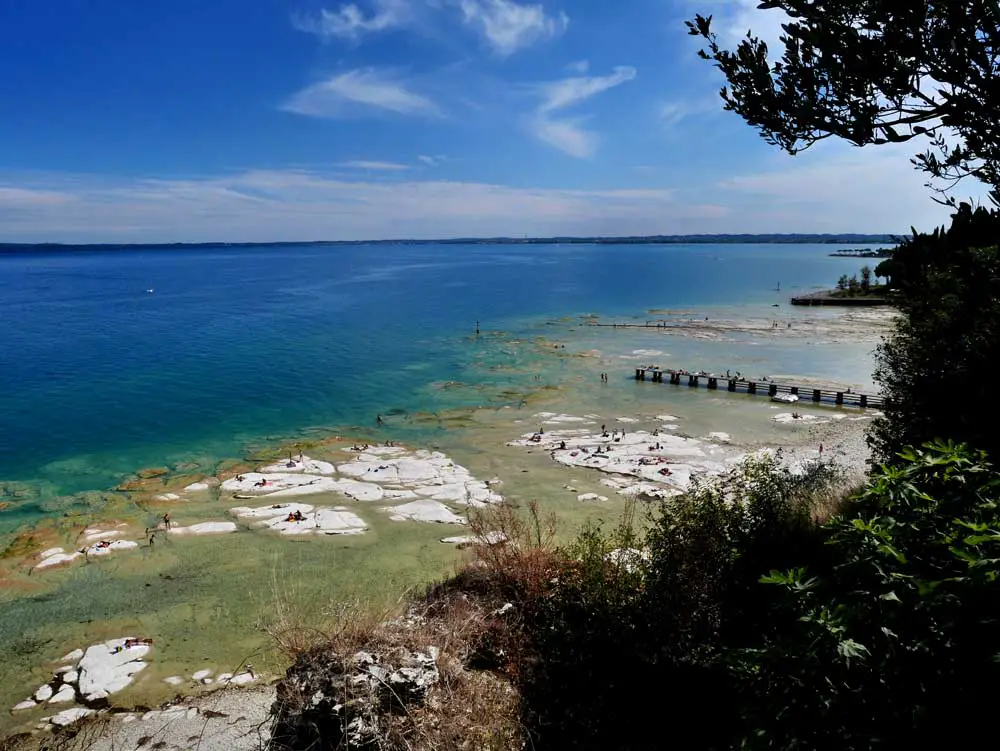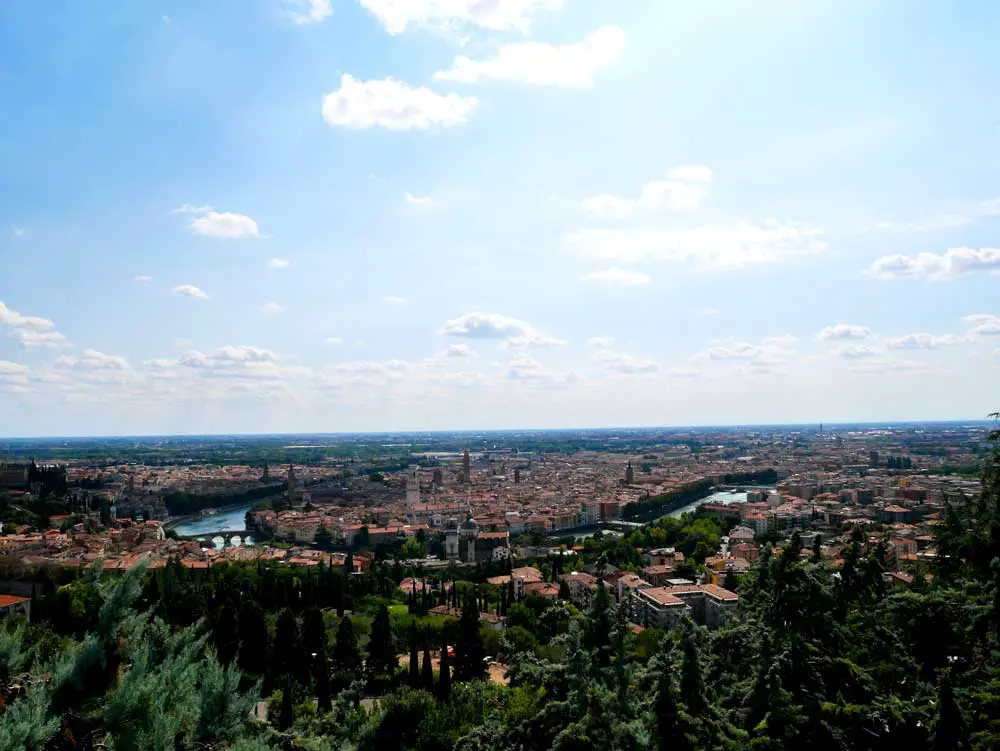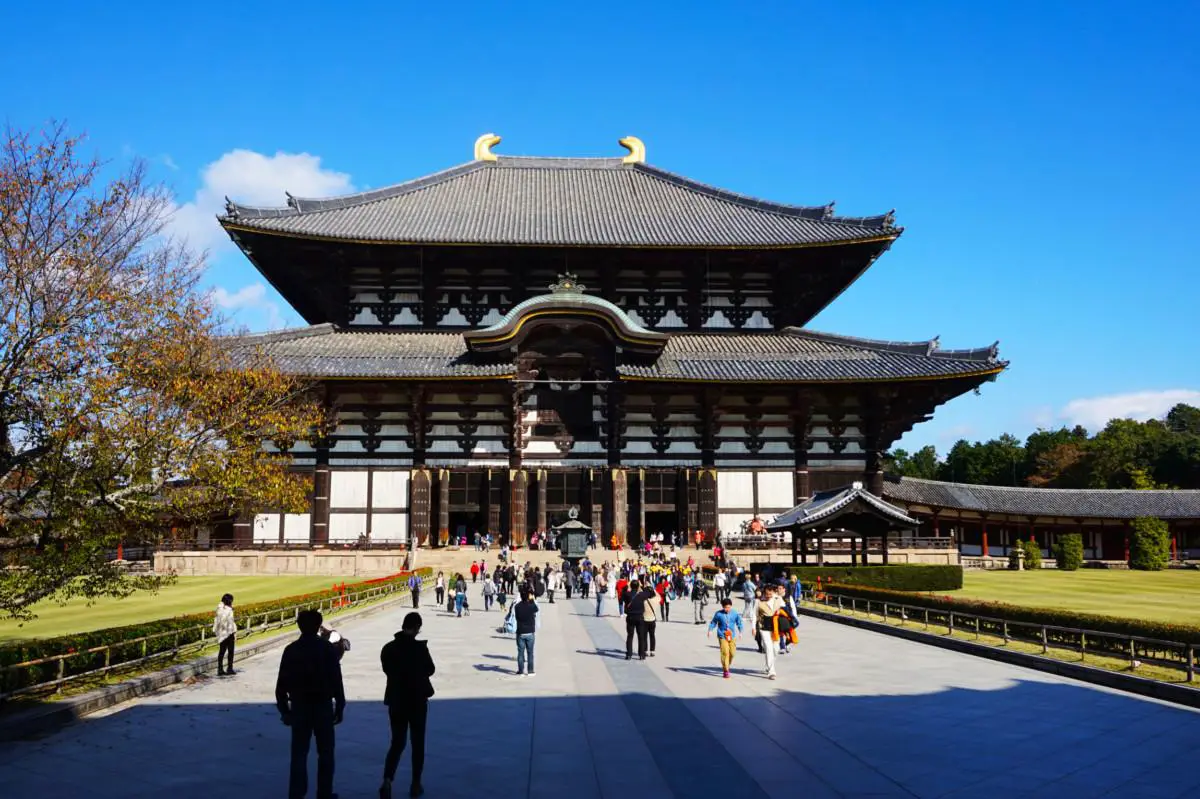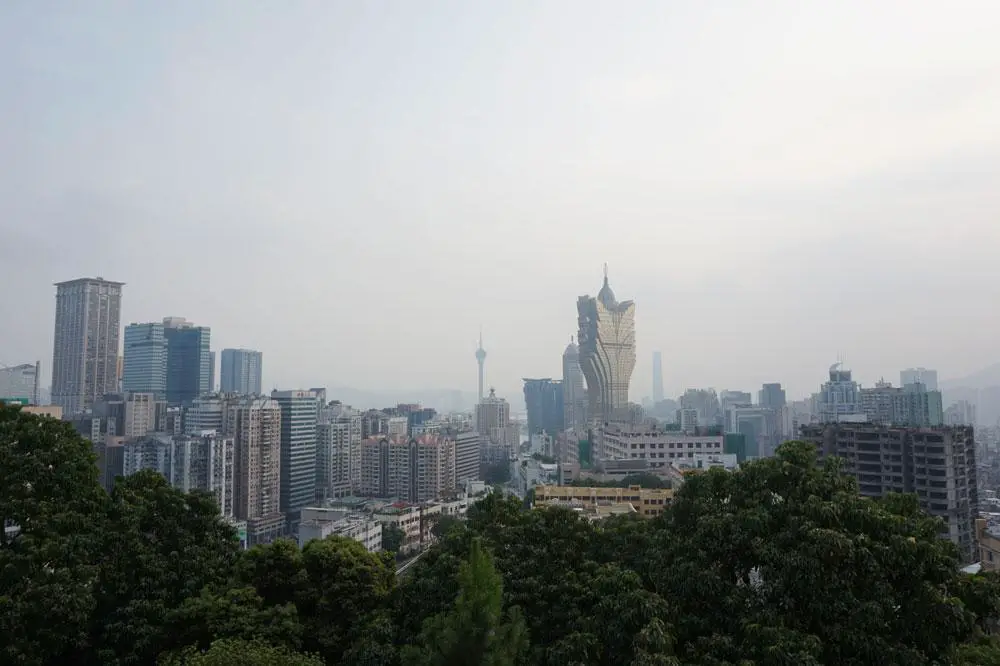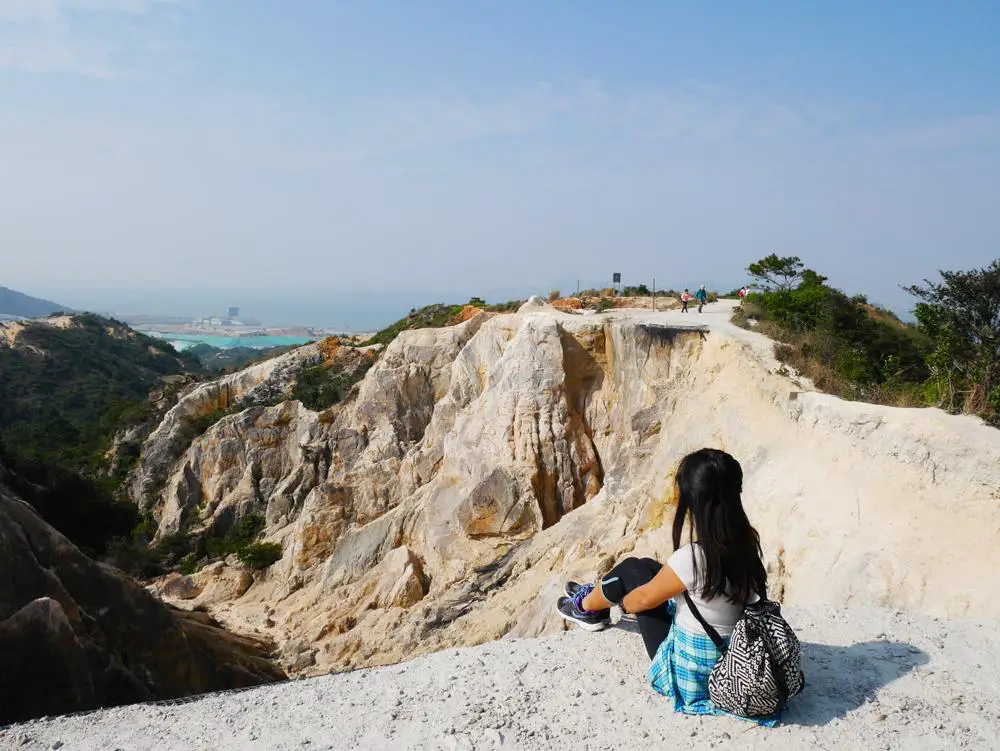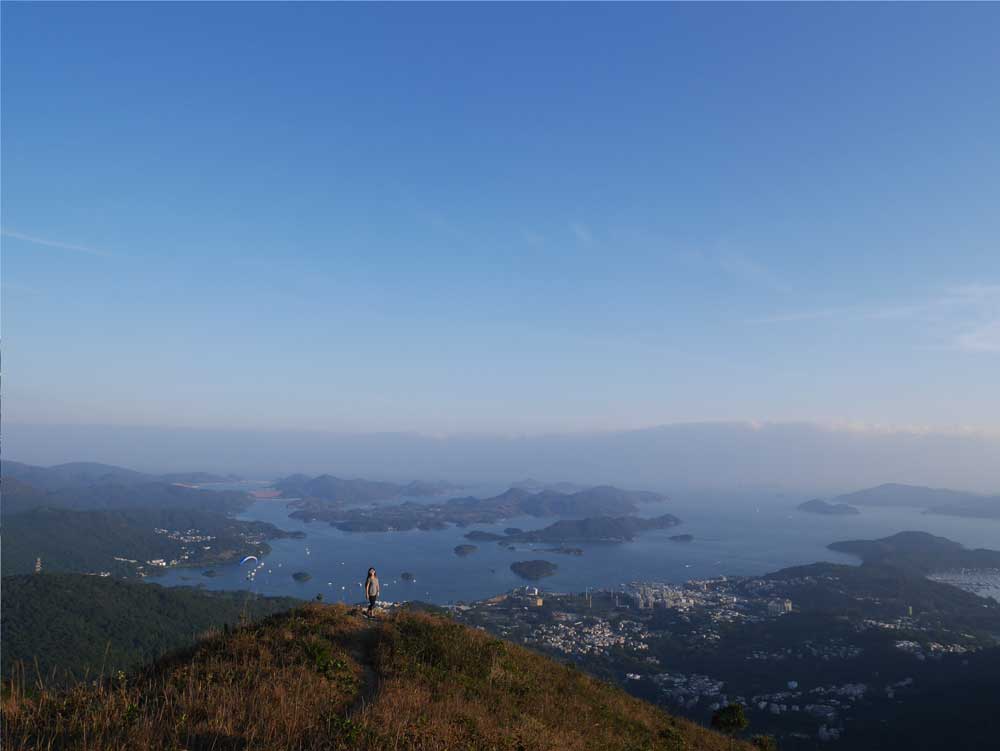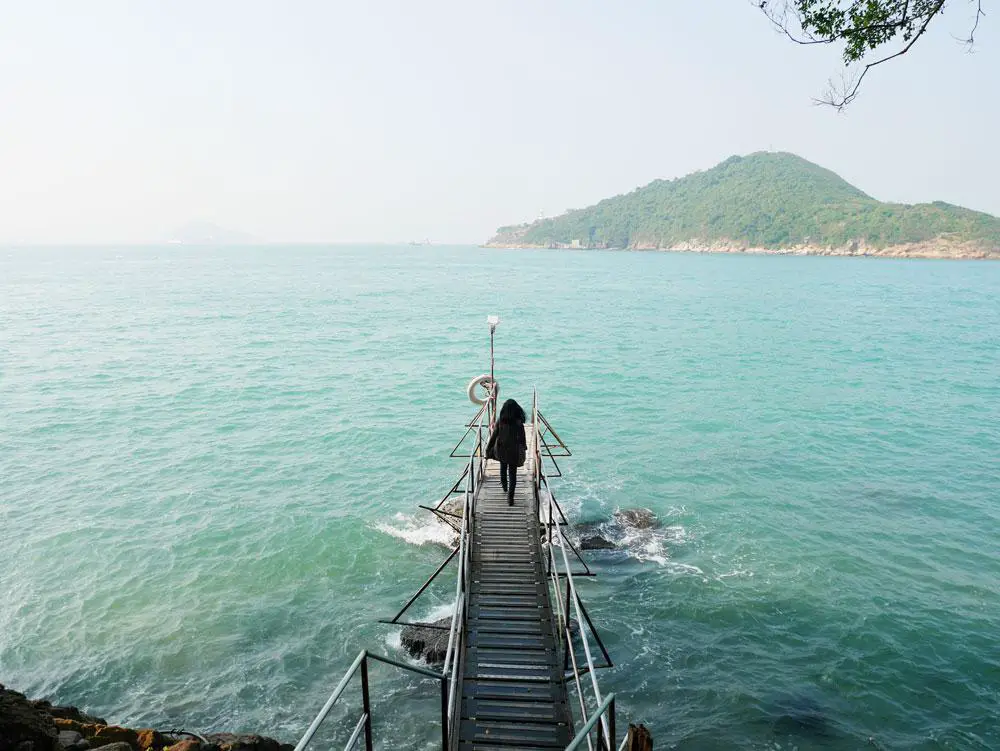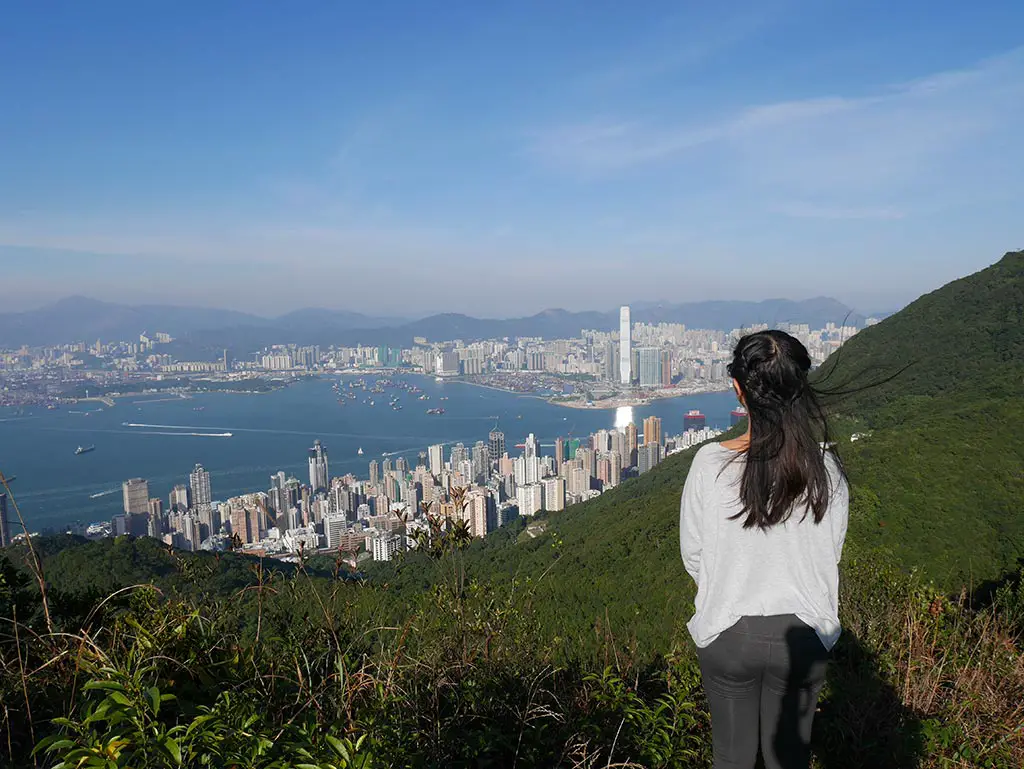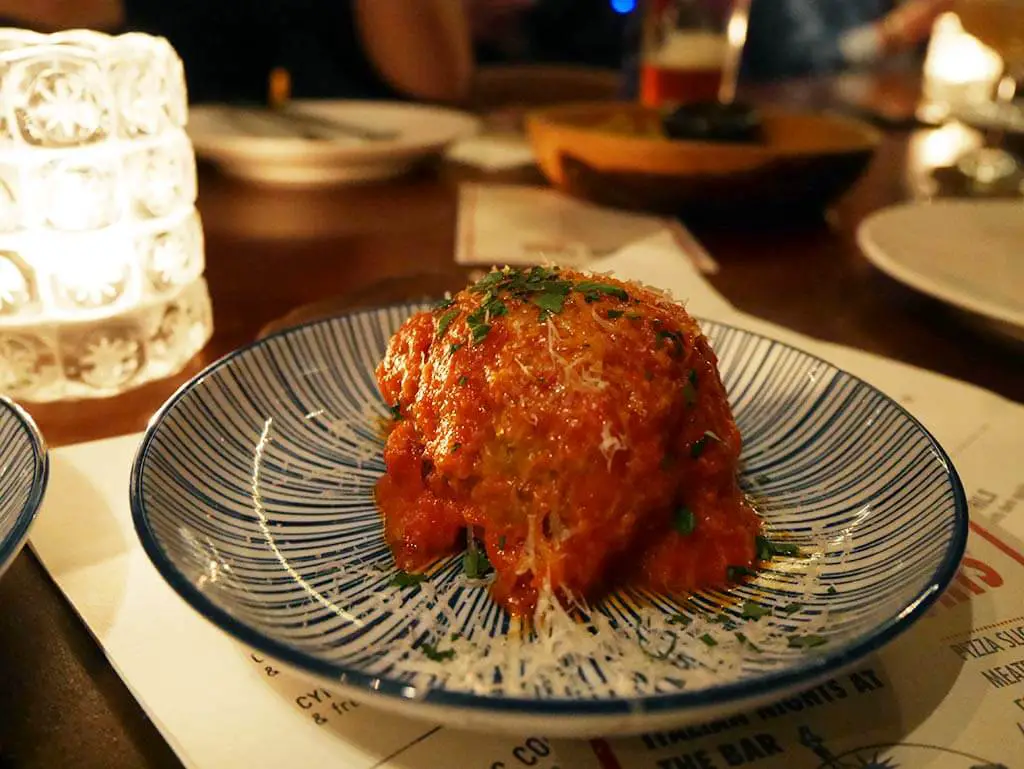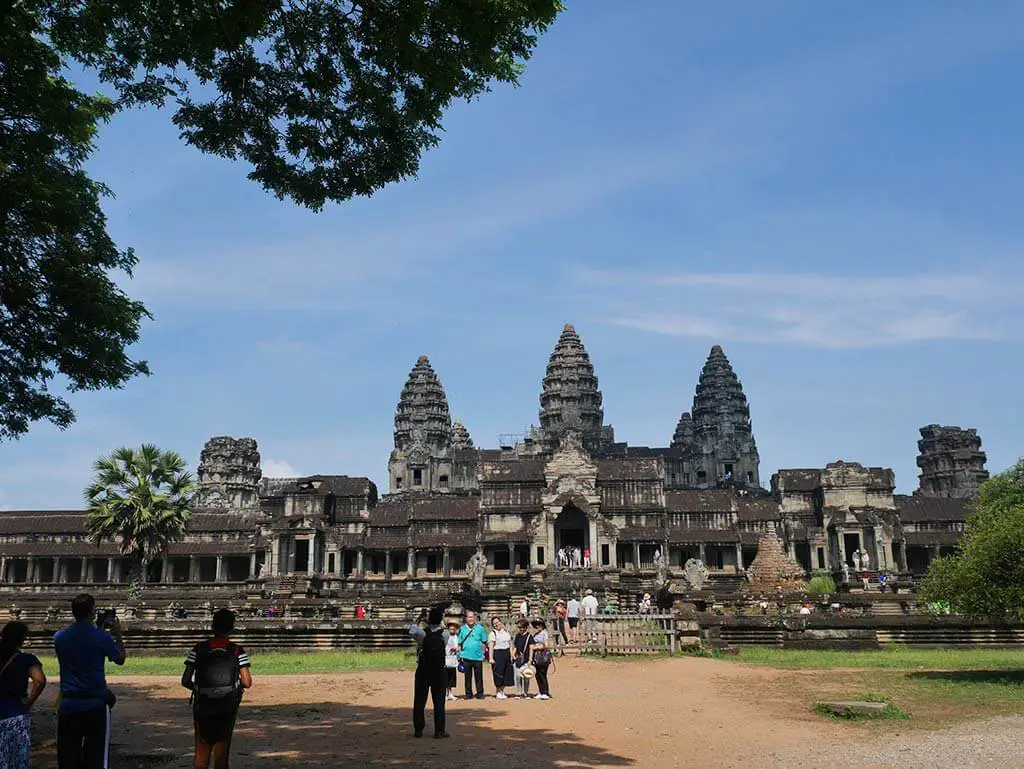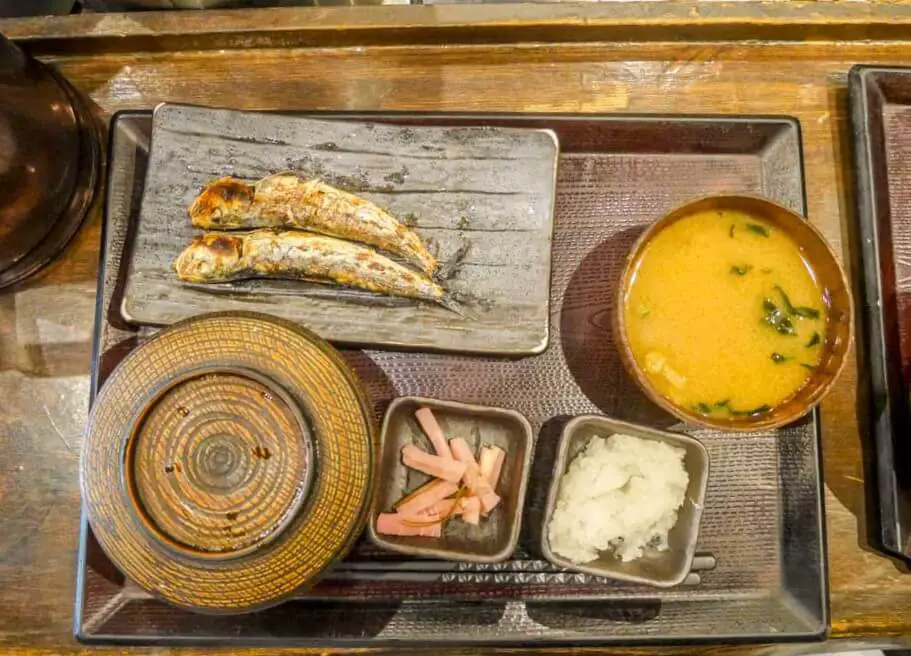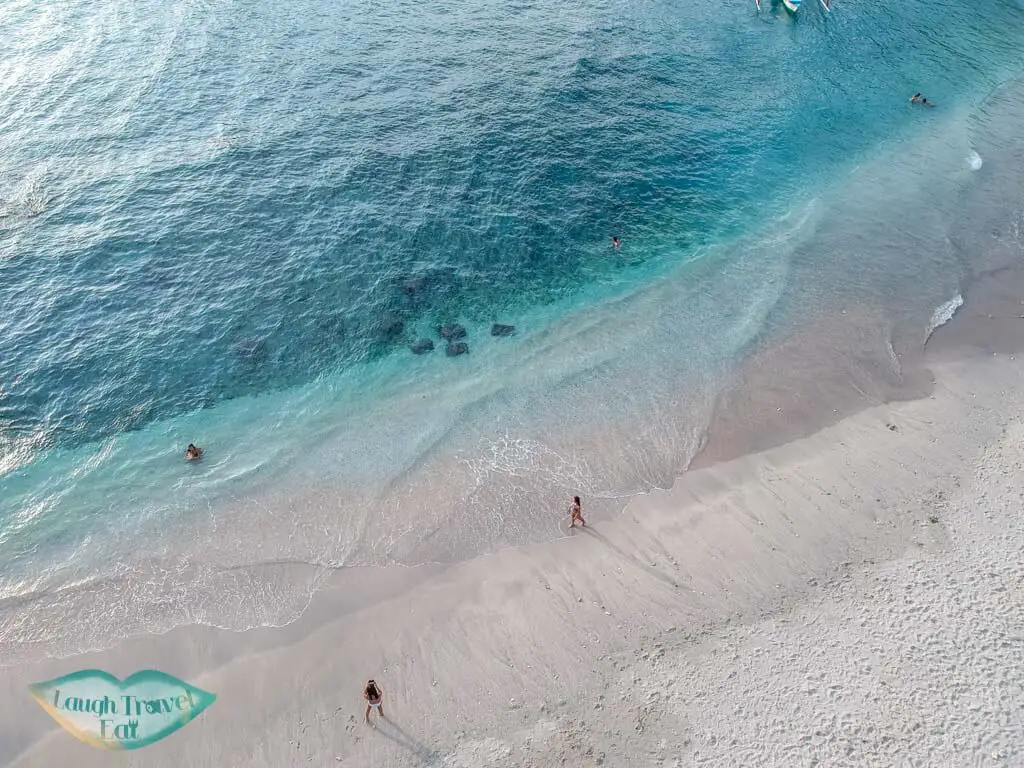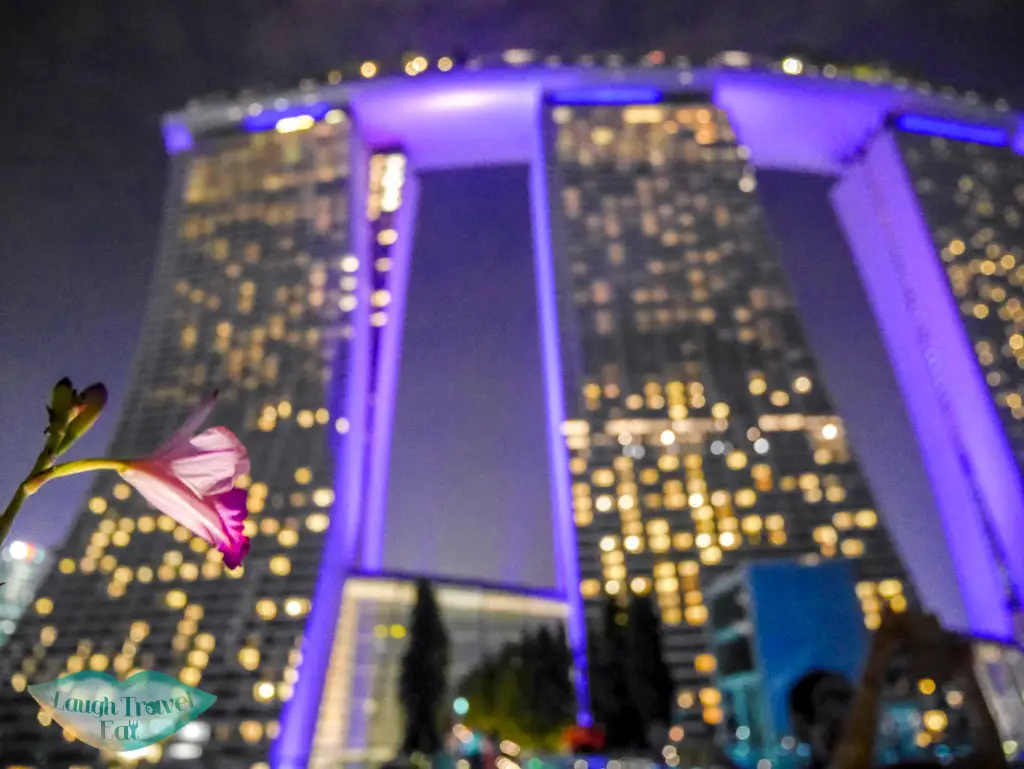Three days in Vienna – the historic and cultured capital of Austria – is not nearly enough. But it is enough to see the highlights. Once the seat of the Austrian-Hungarian Empire and the seat of the Habsburg dynasty, it oozes class and elegance that can only be born from years of history. It can be daunting for first time visitors to decide what to see, especially in a city where prices aren’t the lowest.
With only 3 days to spare (and afford), I was determined to find the most cost-effective way to see the city.
Contents
Vienna essential information
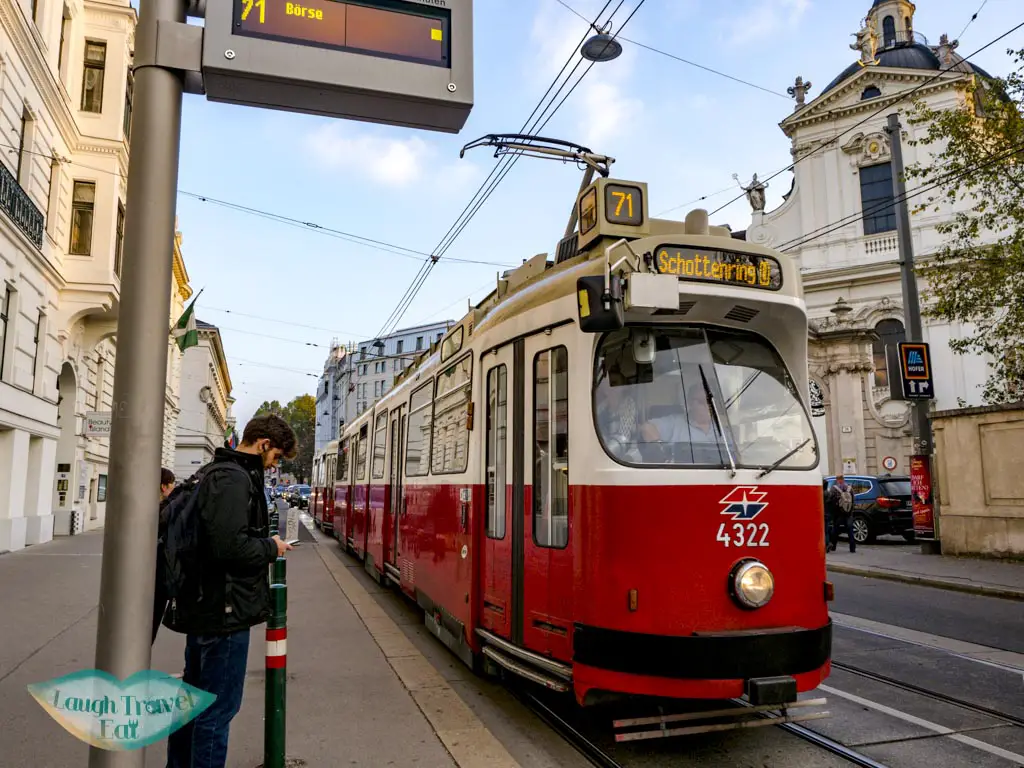
- You can drink tap water in Vienna (and the rest of Austria) and there are numerous water fountain dotted around the city
- The plug are two round pegs – standard European
- Tipping is not necessary, but rounding up is appreciated
- For first time visitors, it’s recommended to either get a Vienna Pass or Vienna Card (more next)
- Public transport is very easy with metro and tram mostly, although things are generally fairly walkable between the museum quarter and the old town
- There are no ticket barriers for metro, but a fine is issued if you are found by an inspector without a ticket
Vienna Card or Vienna Pass
There are two options in terms of a visitor’s card: Vienna Card or Vienna Pass. the former offers a discount for various attractions, restaurants, and shopping, while the latter is more of a museum pass. Which one would be better for you depends on your pace and interest. Here’s a quick break down:
Vienna Card
A card that already include transportation, Vienna Card is good for those who want to enjoy some discount and slowly explore the city. A 3-day card costs 29 euros, given that the transport pass already value at 17.1 euros, the extra 11.9 euros can be saved from its various discounts. However, if you are looking at saving for museum, it won’t be as good as the Vienna Pass. In addition, discounts extends to certain tours and music and theater performance.
Vienna Pass
The pricer option, Vienna Pass is great for museum lovers as it includes over 60 attractions and activities. If you are fast pace and don’t mind doing several museums in a day, this is the best option. A 3 day pass costs 125 Euros, and with what I saw – I spent over 165 euros, which meant that I saved 40 euros with the pass!
Full list of attractions included can be found here
Note: if you don’t want to get a Vienna Pass, I’ll list whether I think the museum is worth going to without the pass at the end, and you can decide based on the information I provide.
Nam
Vienna 3 day itinerary
Day 1
Albertina
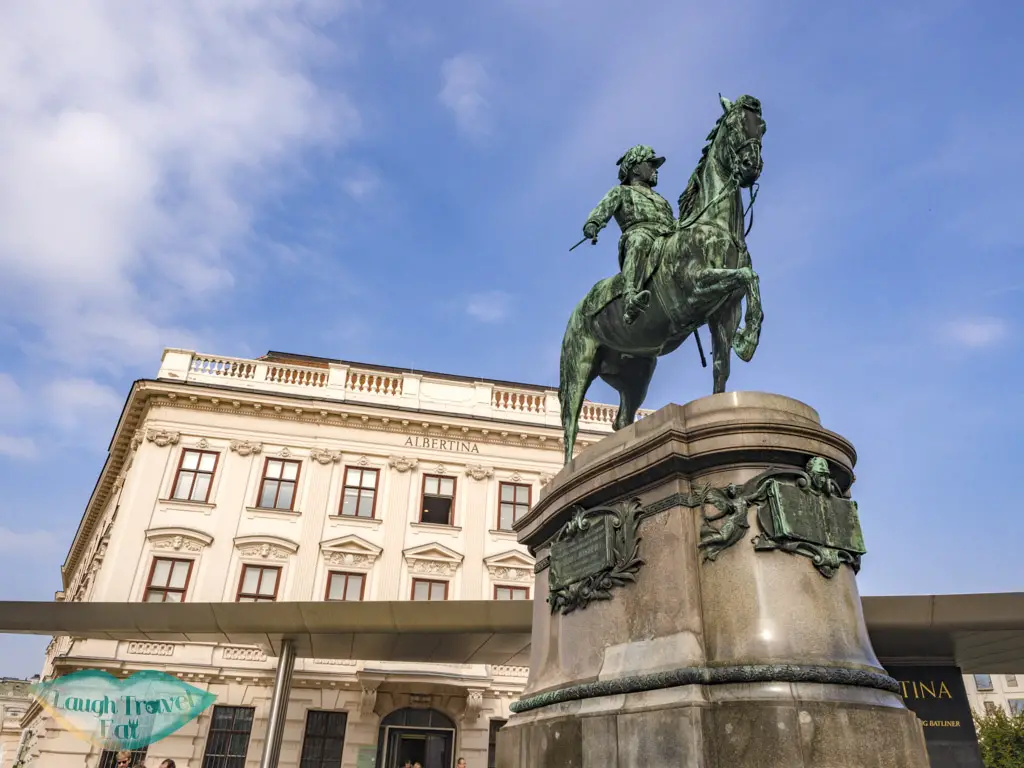
The Albertina is a historic art museum next to the Hofburg Palace in Vienna. It used to be one of the city’s bastions but was converted to a palace and a residence for different aristocrats including one of Empress Maria Theresa’s daughter and her husband.
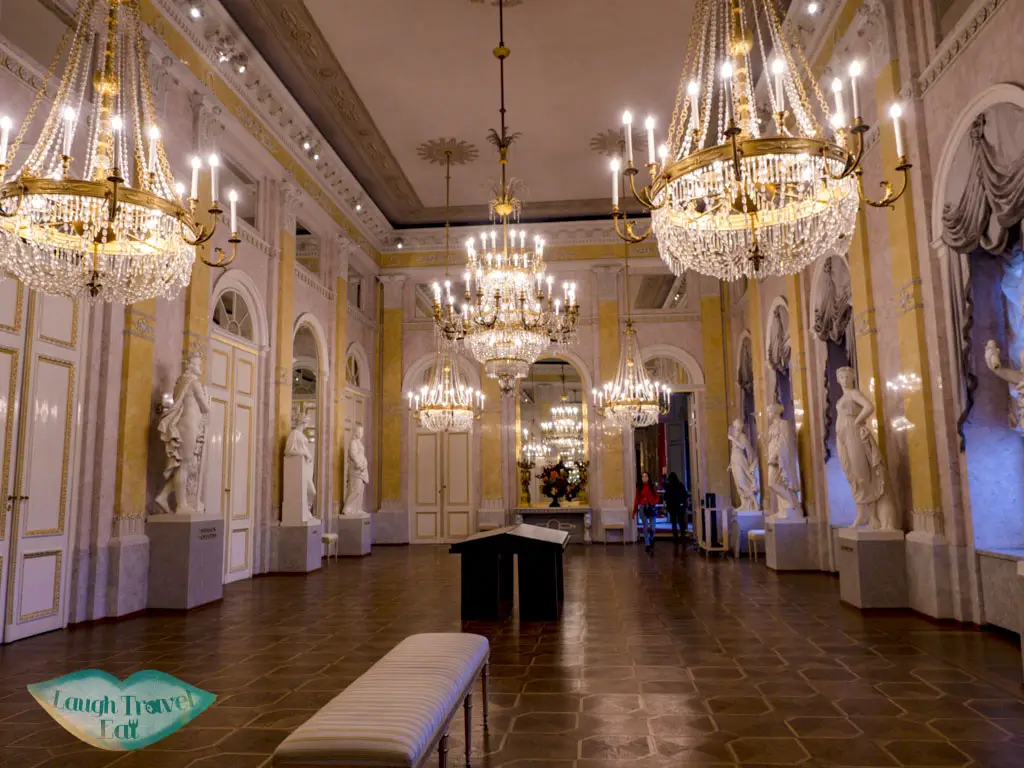
The museum has 4 floors including basement, with both temporary and permanent exhibition. Personally, I loved the 21 beautiful staterooms from the 18th century. They were preserved and signs with the history of the Habsburg court can be found around the room. Some of the more memorable rooms include the Hall of the Muses, which has a 9m high ceiling and spans 19m.
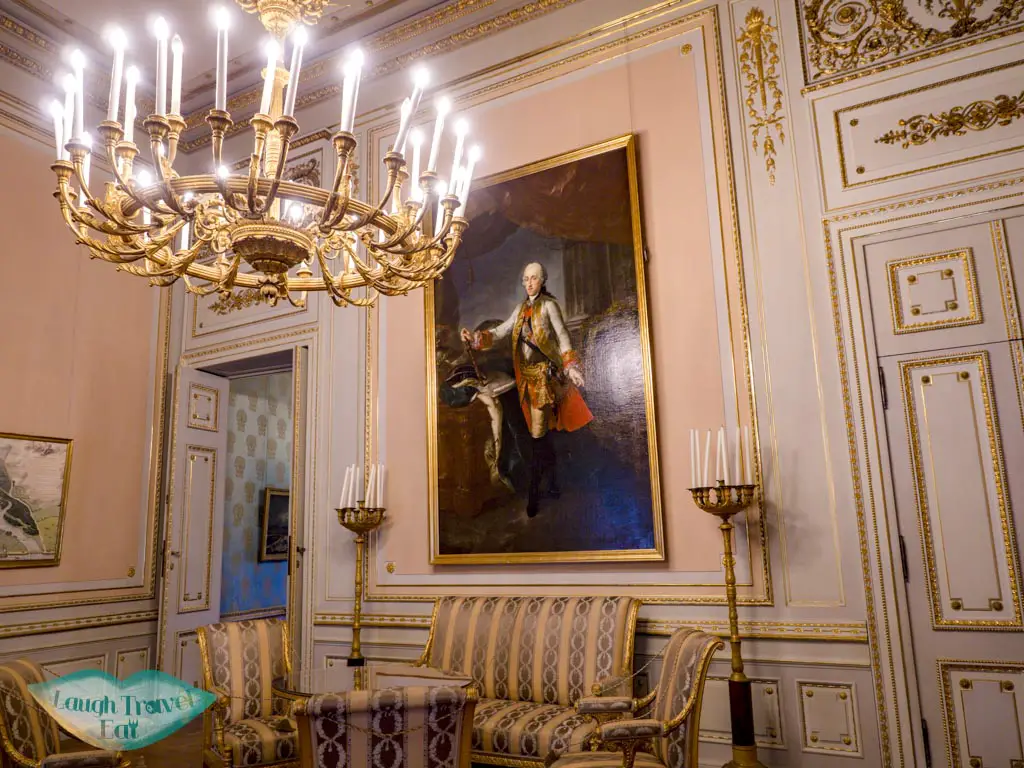
It was designed by Joseph Kornhausel in 1822 with plaster marble and crystal chandelier, used as a dining room and ballroom in Classicism style. The yellow neo Rocco room is also cute, as well as the distinctively red Spanish apartment for where Queen Maria Christina and son King Alfonso XIII resided between 1895-1918.
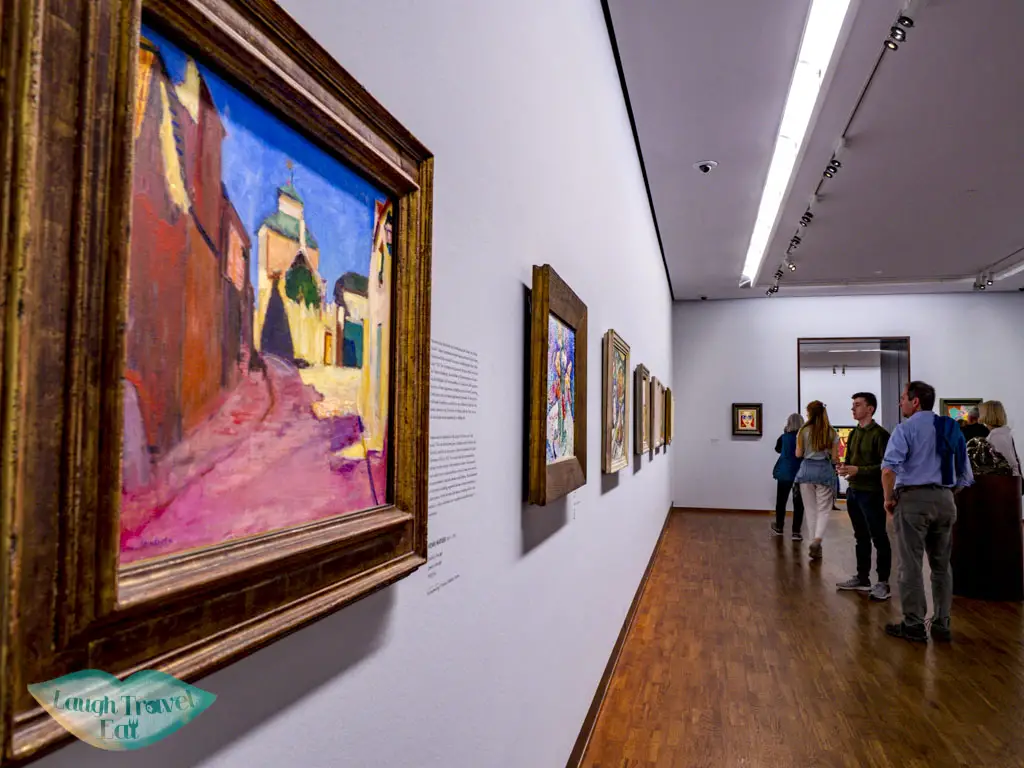
The top floor is Batliner’s collection from the late 19th century onwards, featuring art by Picasso among others.
Note: visitors have to check bags but free lockers with 1 or 2 euros deposit
Entrance fee: 16 euros, free with Vienna Pass (with skip the queue)
I enjoy the stateroom visit, however, if you plan on visiting just one royal apartment, I’ll go to the Habsburg Imperial Palace one for a combined visit with Sisi Museum.
Nam
Hofburg Palace
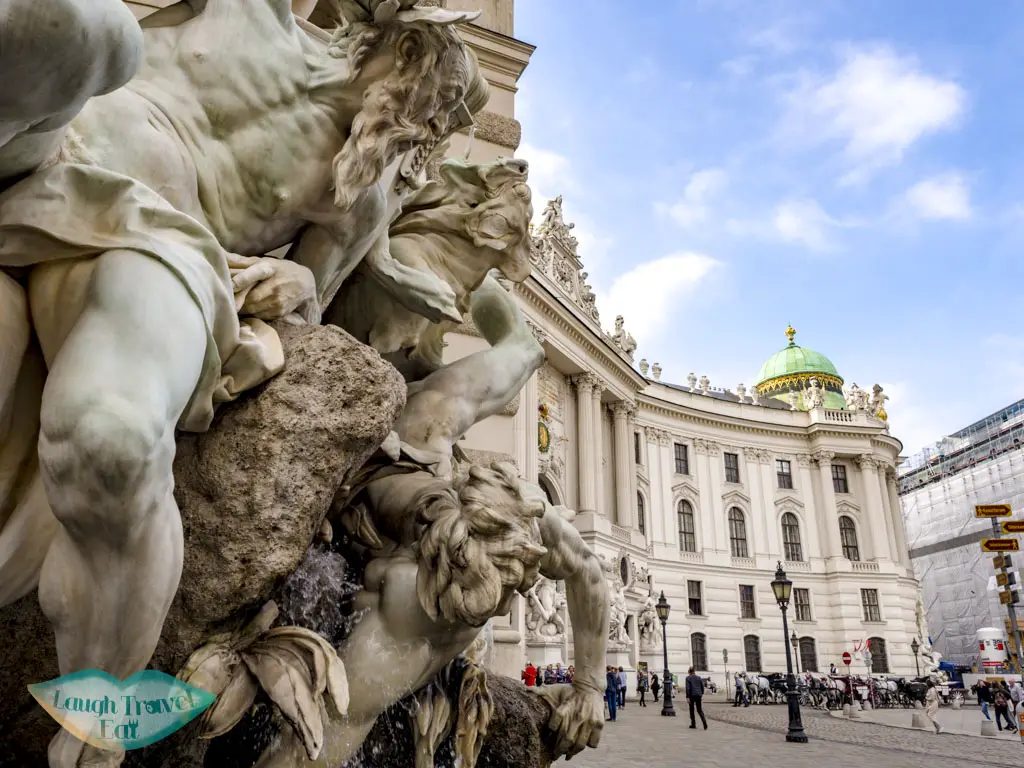
The imperial palace of the Habsburg family is located in the heart of Vienna. The beautiful white building with ornate statues and relief is more of a complex, with many extensions built since its birth in the late 13th century. It houses the Spanish Riding School, Sisi Museum, Royal Apartments, and the Royal Treasury. It’s a little confusing, so here is what you can see in the complex:
Sisi Museum and the Royal Apartment
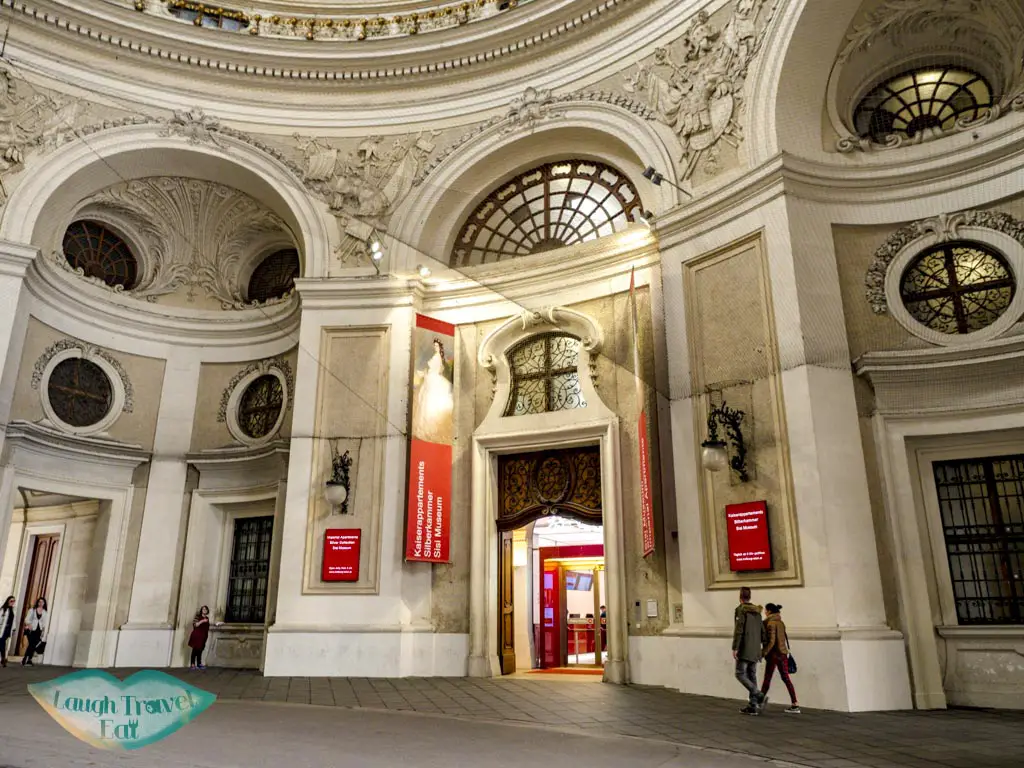
For the Sisi Museum, Imperial Apartments, and the Silverware Collection, you can get a ticket to see them together on the right side of the main palace entrance. A free audio guide is provided and the route starts with the Silverware Museum.
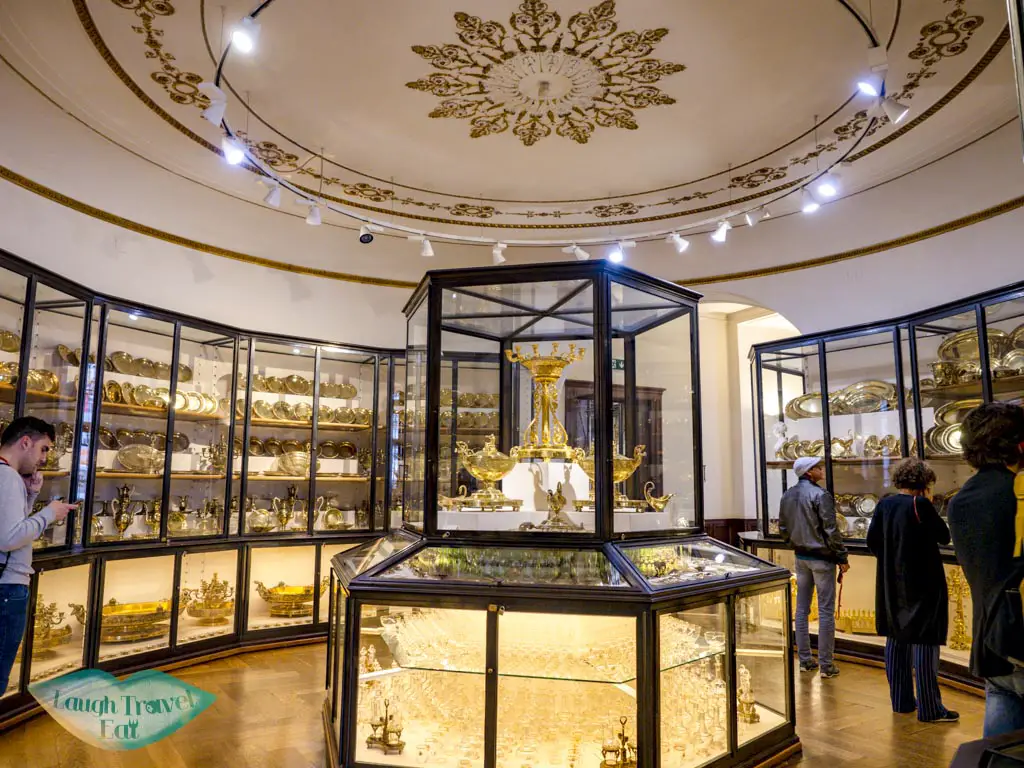
The highlight option for the audio guide (numbers marked with star) means you can breeze through it in 20 minutes if you are not interested. The series of room houses copper pots, imperial porcelain, linen, some of the porcelain are particularly intricate.
Sisi Museum
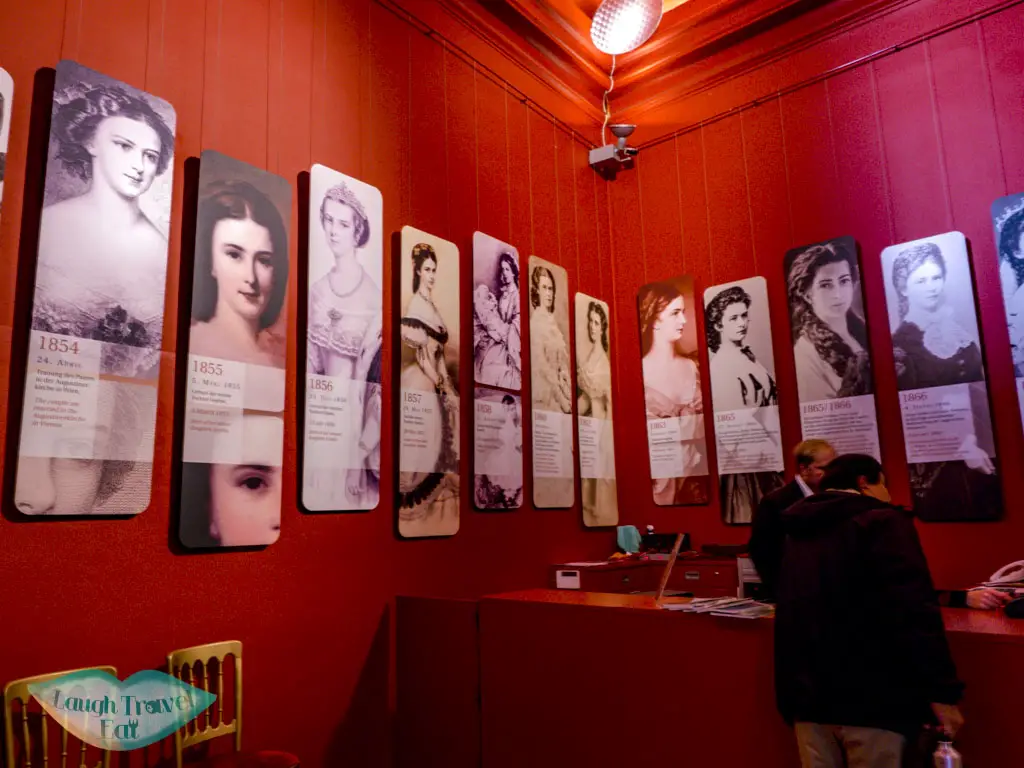
Between the Silverware Museum and the Sisi Museum is a gift shop. Just cross to the door directly across and go up the stairs. Photos are not allowed inside and you must show your ticket (or purchase one if you haven’t already) to enter.
Sisi is the nickname given to Empress Elizabeth, who was the beloved wife of Emperor Franz Josef I (reigned between 1948-1916). She was considered to be the most beautiful woman of her time, known for her ankle length long hair and thin waist. She married at 16 in 1854 and a reluctant empress who kept out of the limelight. She was assassinated in Geneva in 1898 by an anarchist.
Imperial Apartments
The Sisi Museum transition seamlessly to the Imperial Apartments, where, again, no photos are allowed. It is entered through the Empress staircase, and the apartments had been used by the Habsburg for over 600 years from 13th century, before being relegated to a winter residence. You can see rooms where the Emperor Franz Josef worked, Empress Sisi’s living quarters, and rooms renovated in Empress Maria Teresa’s time.
Admission fee: 15 euros, free with Vienna Pass (with fast track)
I highly recommend visiting especially if you are interested in the history of the Austro-Hungaria dynasty of the Habsburg.
Nam
Belvedere
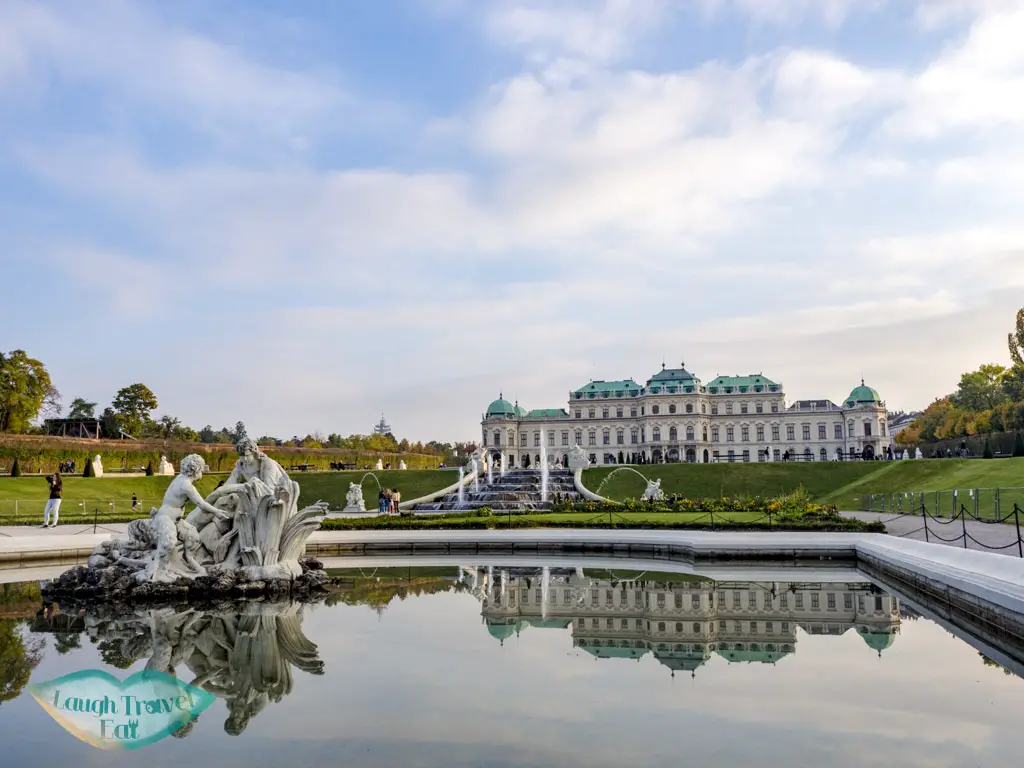
Built in the beginning of the 18th century at the instigation of Prince Eugene of savoy, the Belvedere is in the southern part of Vienna Old Town. Originally, it only consisted of the Upper Belvedere, with the Lower Belvedere being added on a few years later. The Baroque palaces are connected by a sloped garden in between with a fountain. Nowadays, the museums houses art pieces with the addition of a modern art museum.
Upper Belvedere
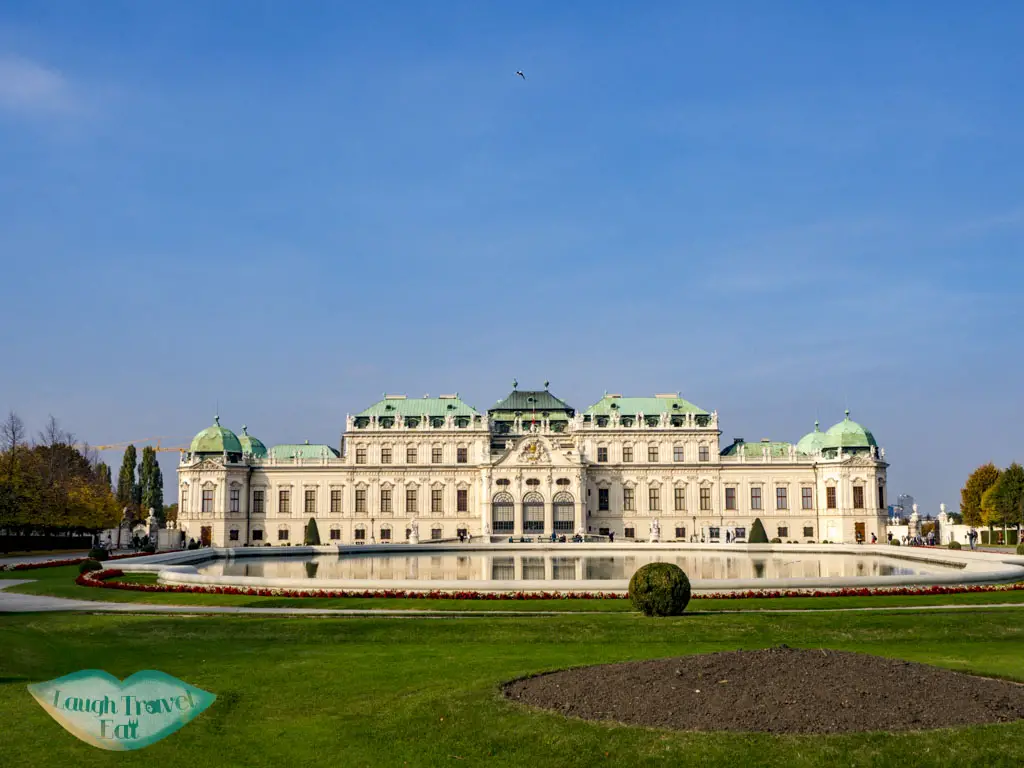
The Upper Belvedere is a three storey white baroque building guarded by Sphinx. Its highlights include the marble staircase, the main room, and Gustav Klimt’s painting of the Kiss.
The other side of the building fronts a large pond that makes for a beautiful photos.
Lower Belvedere
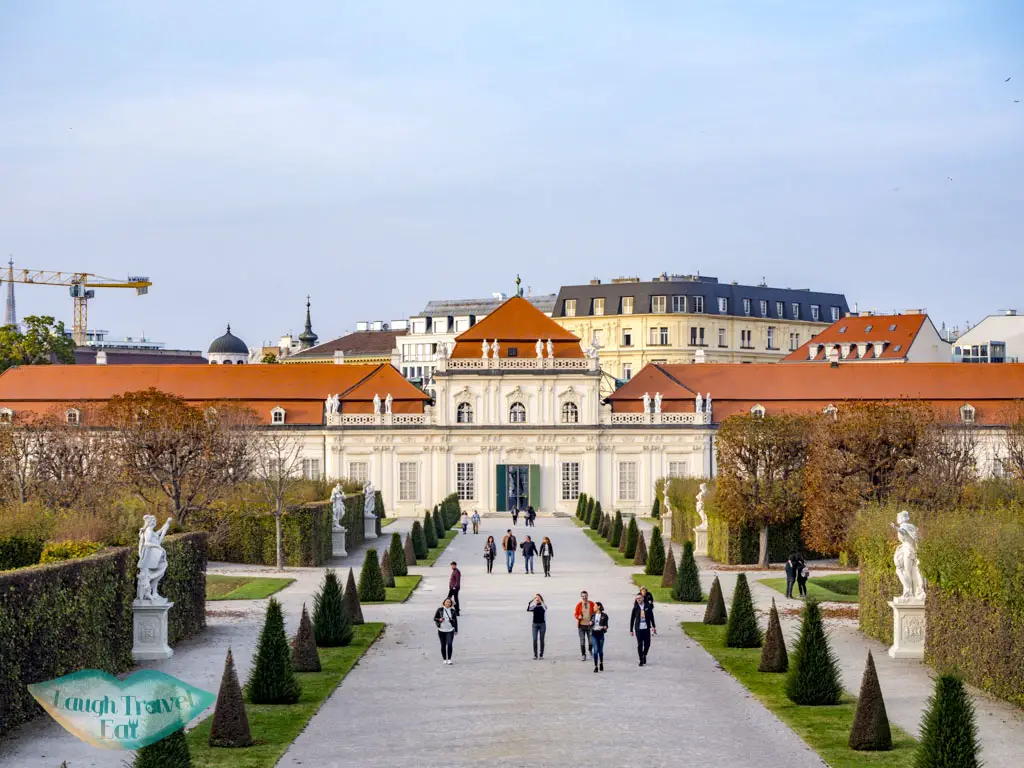
The Lower Belvedere is towards the north end of the complex on the other side of the garden. It’s smaller than its counterpart and across the beautiful garden, which are free to enter. The Lower Belvedere has less exhibits, with two rooms with original decoration and a temporary exhibit at the Orangery and the medieval art at the stable.
Note: you are required to check your bag and coat in the cloak room for both but it is free
Admission fee: 16 euros for both, or 14.5 euros for Upper Belvedere only, which I would suggest if you only want to go to one.
If you do not have the Vienna Pass, I would only visit the Upper Belvedere to see the Kiss and admire the Marble Staircase
Nam
Drinks at 25 hours hotel rooftop
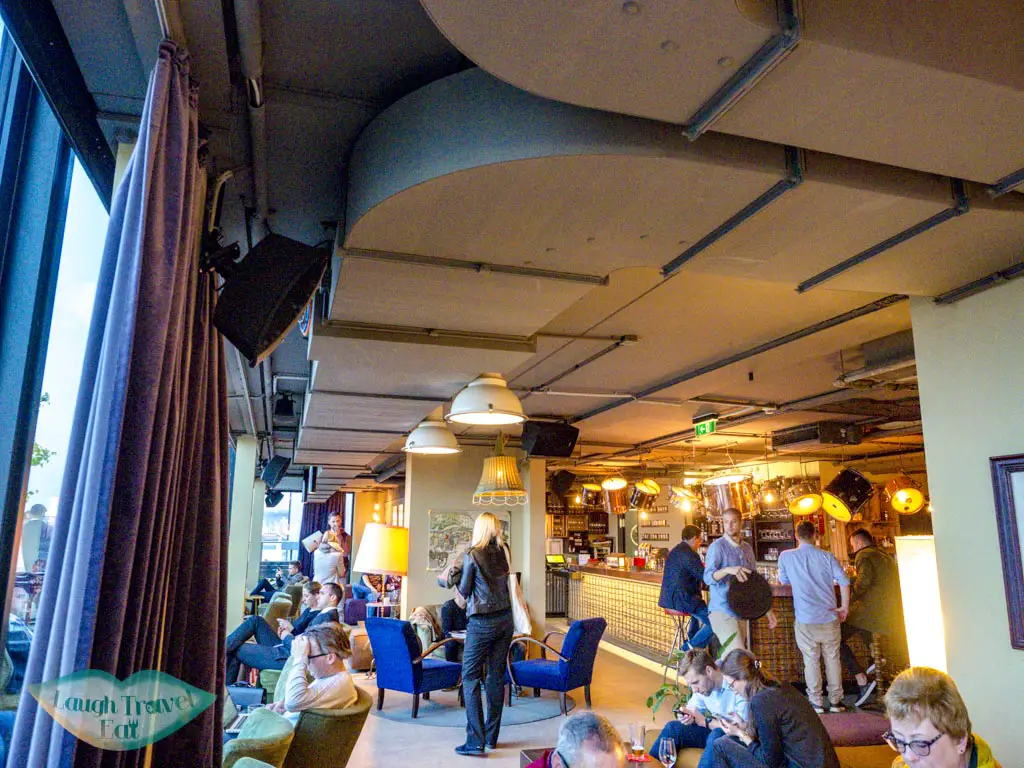
Want to see the sunset with a view? Head to the 25hours hotel and enjoy a drink with a view of the Museum Quarter and towards the Old Town. but be sure to get there early as there are limited space on the balcony.

Dinner at Das Kauzchen
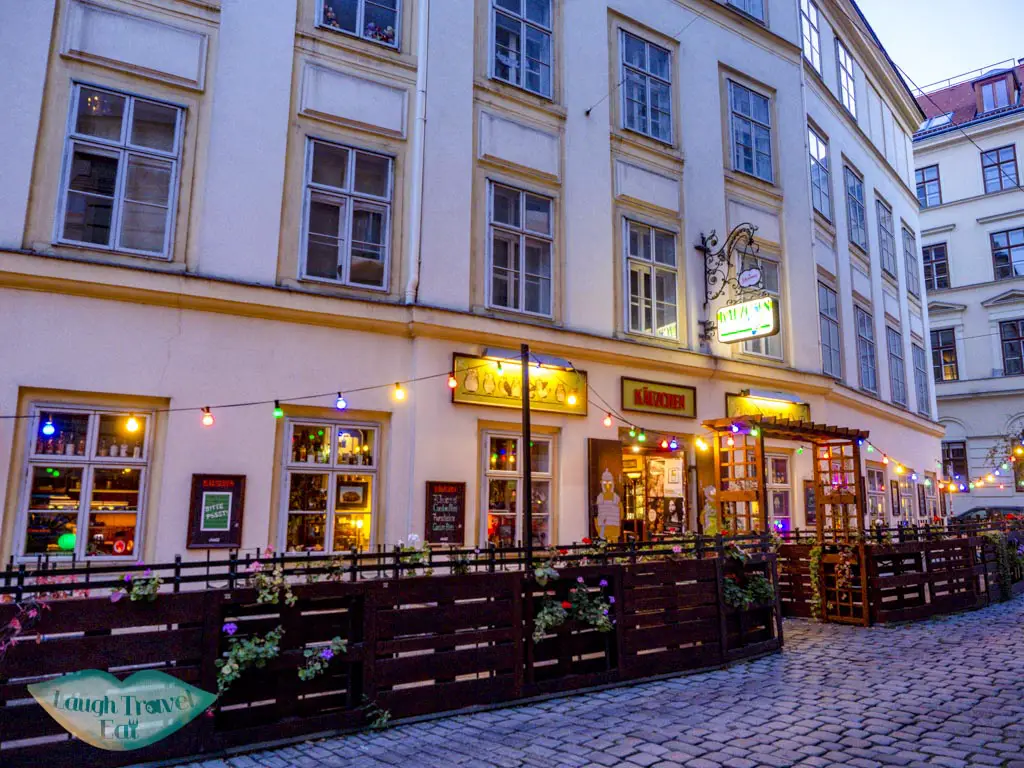
A pub with local food near the 25hours hotel, Das Kauzchen has both in and outdoor seatings. The right side of the pub is non-smoking and left is smoking area. They have a good range of beer as well, and I ordered a small Wien Schnitzel with a beer for just under11 Euros. The service, however, is a little slow, so if you are in a hurry then perhaps it isn’t the best option.
Address: Am Diamantengrund, Gardegasse 8, 1070 Wien, Austria
Opening times: Mon – Sat 16:00 – 2:00; Sun 16:00 – 0:00
Day 2
Spanish Riding School
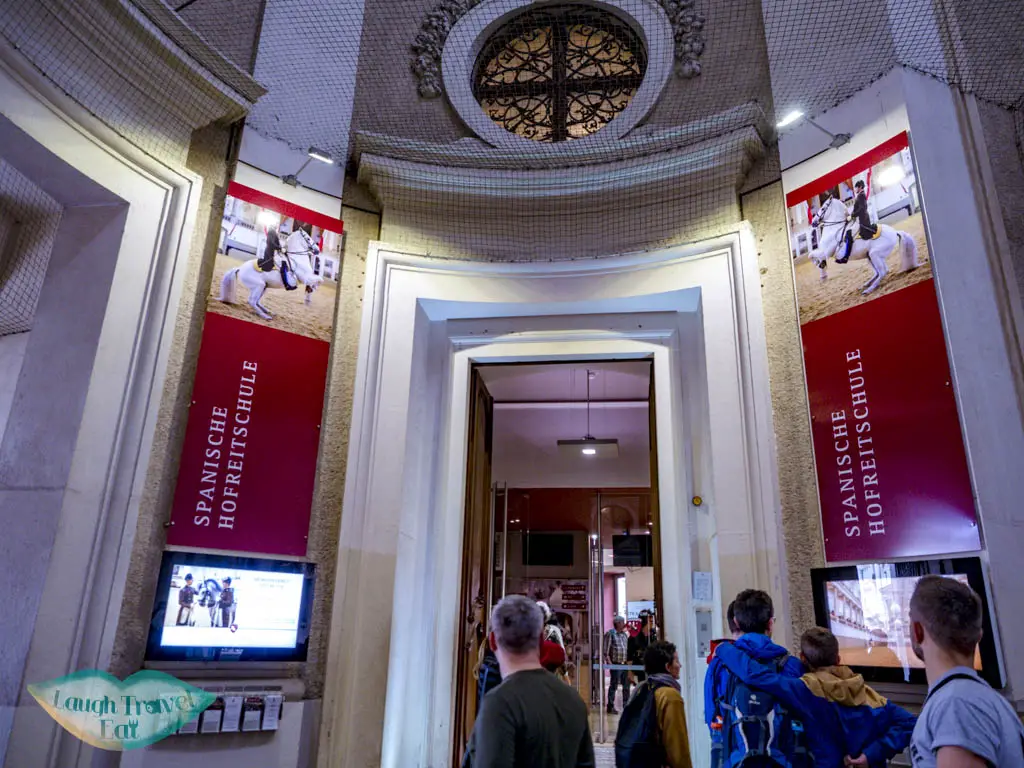
The Spanish Riding School has been an iconic institute in Vienna for four and a half centuries. The classical dressage training, where the riders ride in harmony with the horse in elegant dance-like movements, is legendary. They also exclusively train Lipizzaner horses, which are from Slovenia. The most popular way to see them in action is to attend their morning exercise, although you can also buy tickets to see their proper shows in the evening, often accompanied by an orchestra.
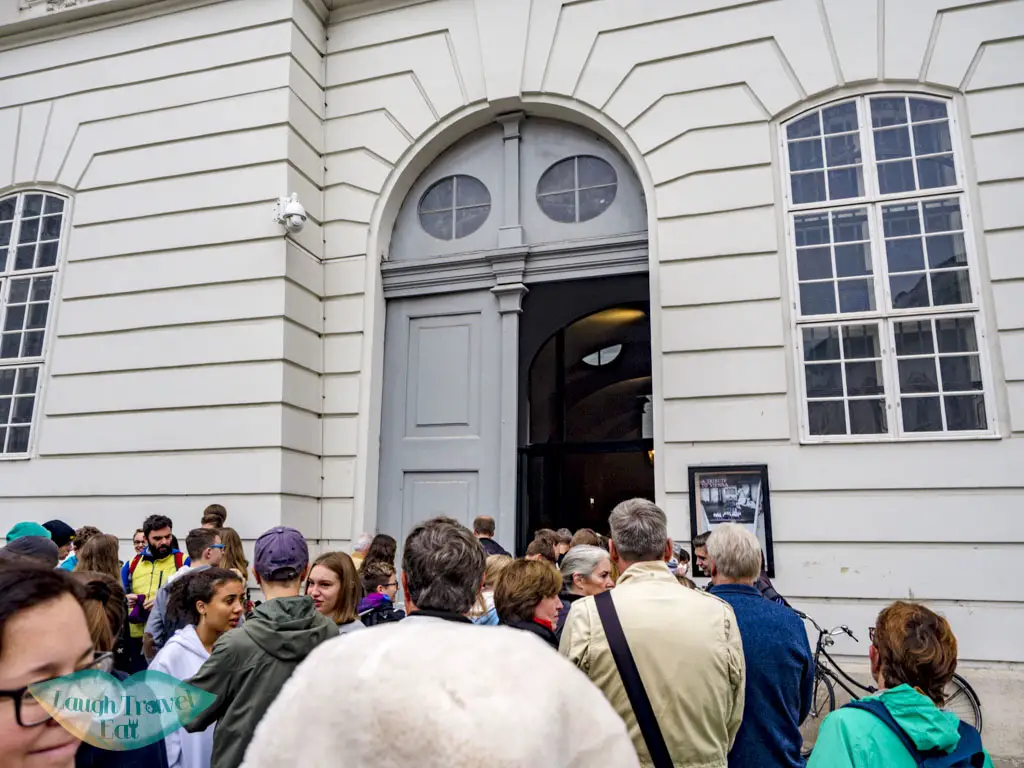
The morning exercise open the doors at 9:50 and many are queuing to buy the tickets even before then. The second entrance by the National Library is much less crowded but also serves as a group entrance.
There are two galleries, lower and upper called gallery one and two where you can view the exercise. The exercise yard is rectangular in shape and there is also a box seat at either end of the first gallery. Seats can be found around both first and second gallery, with standing space further back on the lower gallery. I do recommend going upstairs and finding a seat there if you aren’t near the front of the queue. Visitors can come at any time between 10 to 12 and leave any time, since it’s not an official show.
Each training exercise takes 30 minutes with 3 phrases warming up, training, and cooling off. I stayed for around 25 minutes before leaving, and there were plenty of people coming and going during that time.
Admission fee: 15 euros for morning exercise. Included in the Vienna Pass but tickets need to be redeemed at the counter
If you aren’t interested in horses, you can give it a skip. I enjoy it but it is mostly just watching them trot around with the occasional dance move.
Nam
Royal Treasury
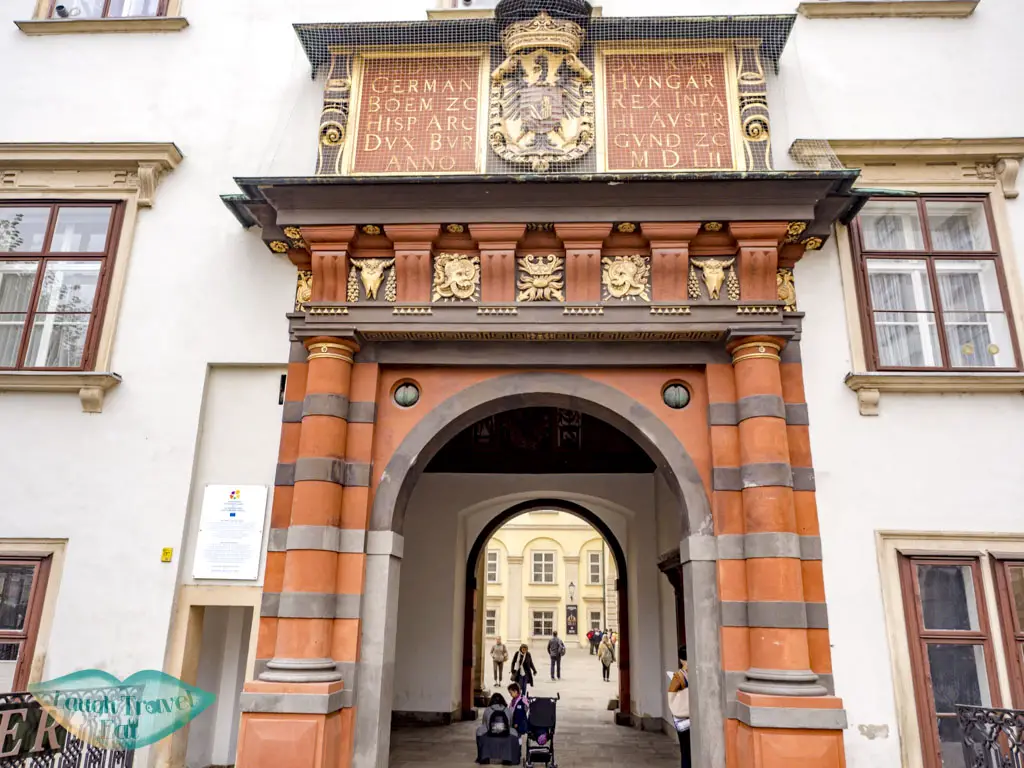
The Royal Treasury is hidden in an unassuming corner of the castle, across the road from the exit of the Royal Apartments. Its location is best marked by the historic red archway.
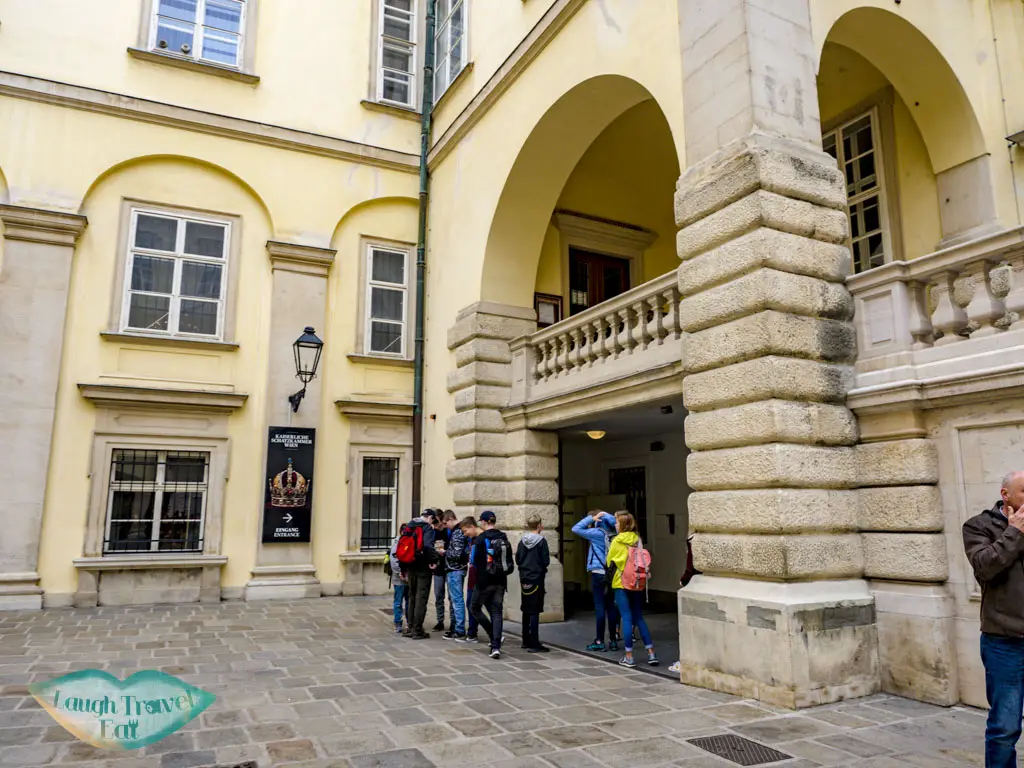
As one of the longest reigning dynasty in Europe, the Habsburg collected an immense collection of valuable and historically significant items, which are now on display. Included are the Habsburg ceremonial robes, Crown Jewels, baptistery robes, and items from the ecclesiastical treasury. The most famous items are the he Unalienable heirlooms of the house of Habsburg, including to what was believed to be a unicorn’s horn (but it’s likely Narwhal’s). They also do a good summary on the history of the Holy Roman Empire and the house of Habsburg.
Note: bags need to be deposited in lockers
Audio guide is not included in the tickets or with the Vienna Pass
Admission fee: 12 euros, concession 9 euros, included with Vienna Pass
Opening times: Weds- Mon 9:00 – 17:30
I did enjoy my visit, but it is not an essential stop if you don’t have the Vienna Pass, though I’d pay a visit if you can find the time.
Nam
State Hall of the Austrian National Library
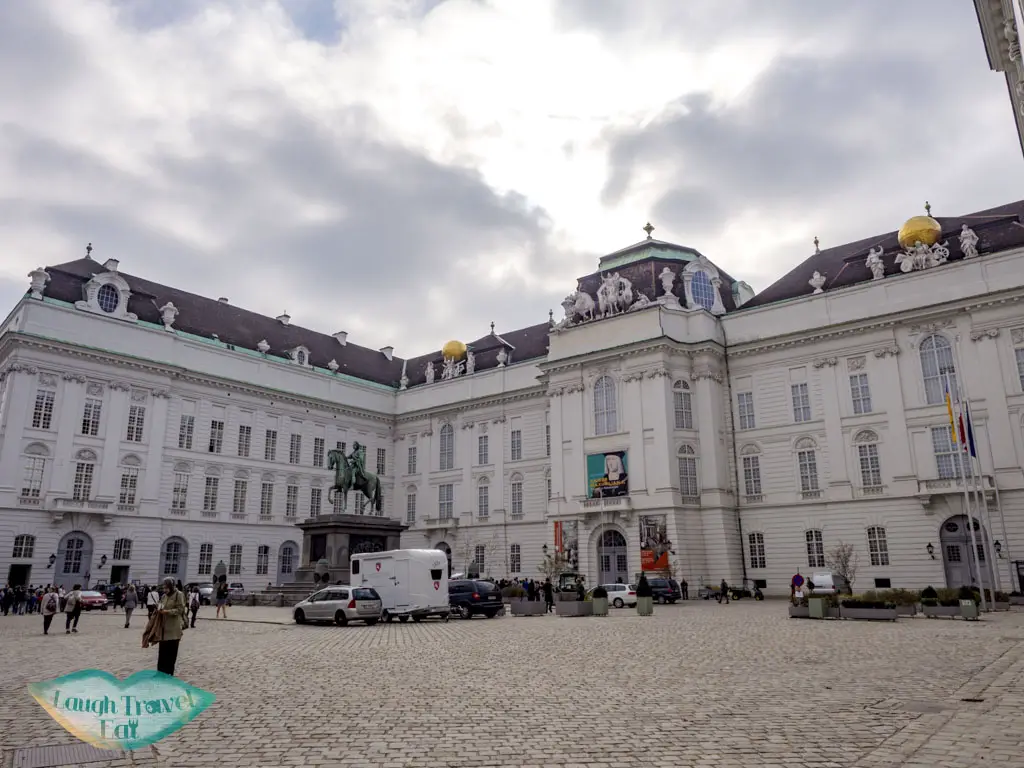
The biggest library in the country, the Austrian Library is home to over 12 millions books, globes, and atlases since the late 14th century. However, most people go there to ogle at the State Hall which puts the library in Beauty and the Beast to shame.
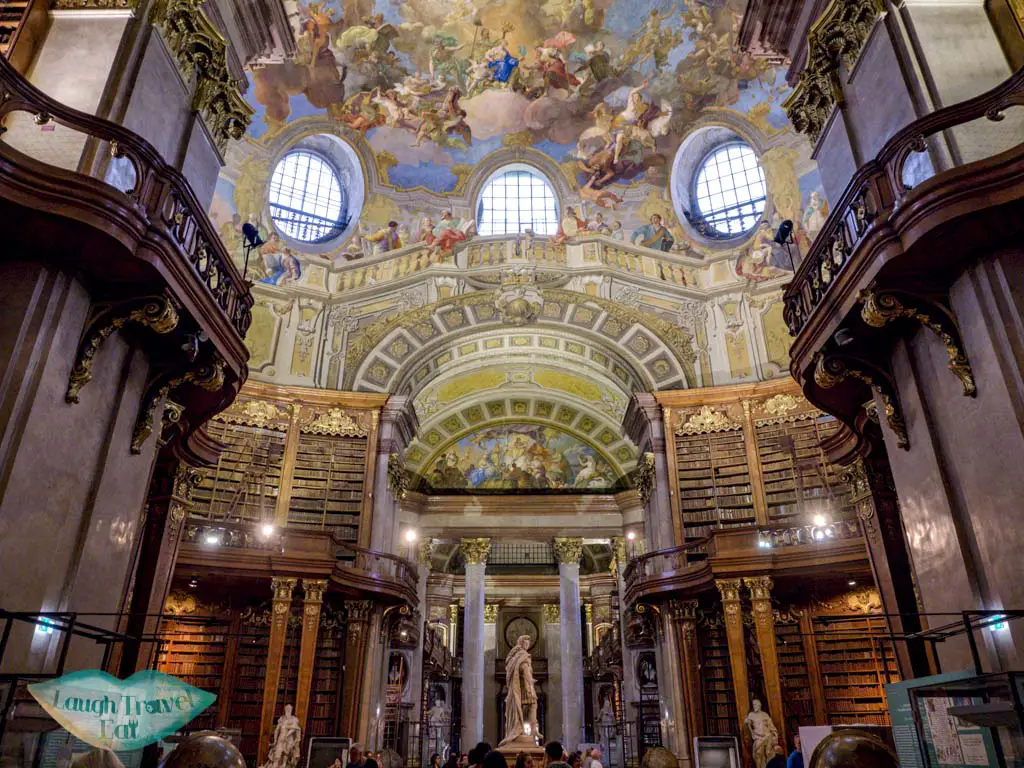
Known as the Prunksaal in German, which was an addition in the 18th century. It has a central circular hall with a domed roof, with a symmetrical corridors. The dome fresco by the Austrian painter Dan Grant depicts Charles VI held up by greek gods and surrounded by personification of Habsburg virtue and wealth (what is known as an apotheosis). In the middle stands the statue of the emperor himself, holding a sword.
There was an exhibit on the Emperor Maximilian I during my visit which was informative and display many historic texts he collected and related to his life and interest.
Admission: 8 euros, free with Vienna Pass
Opening times: Thurs: 10:00 – 21:00; Fri – Weds 10:00 – 18:00
The hall itself is a stunning piece of art and well worth a visit even if you are not into its history
Nam
Reinthaler Gasthaus
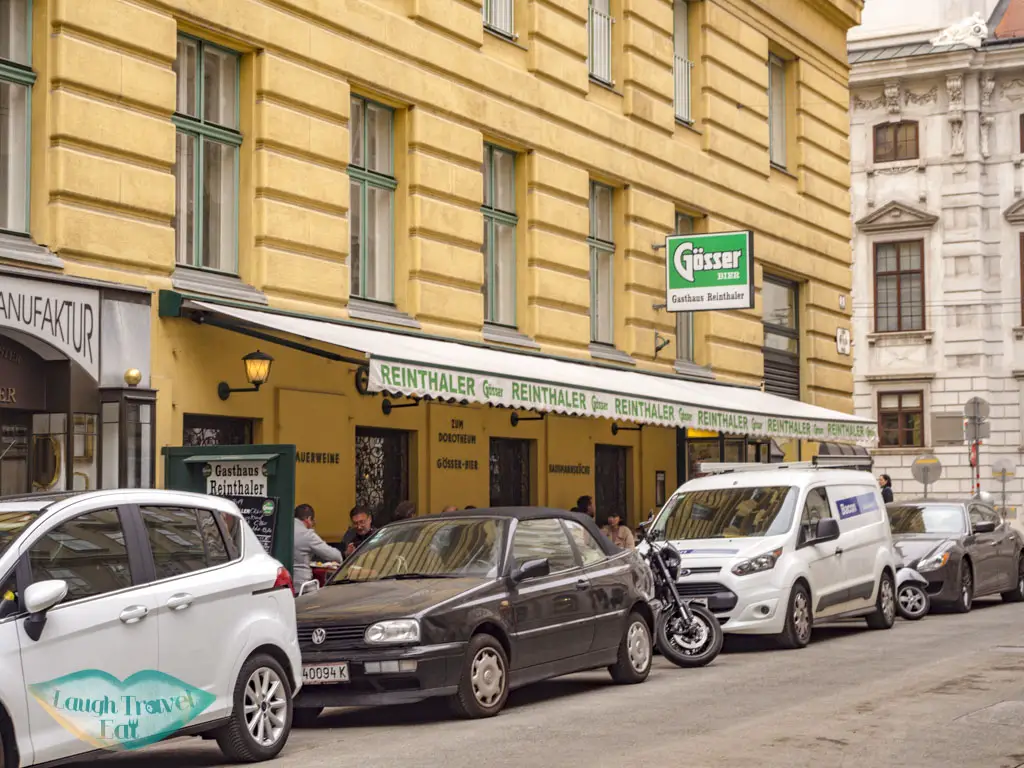
A traditional restaurant that was between the attractions I’m planning to visit, so it was a natural stop. While the staff wasn’t the most friendly or attentive, a small plate of schnitzel only cost 11.4 euros, so a pretty decent price for Vienna.
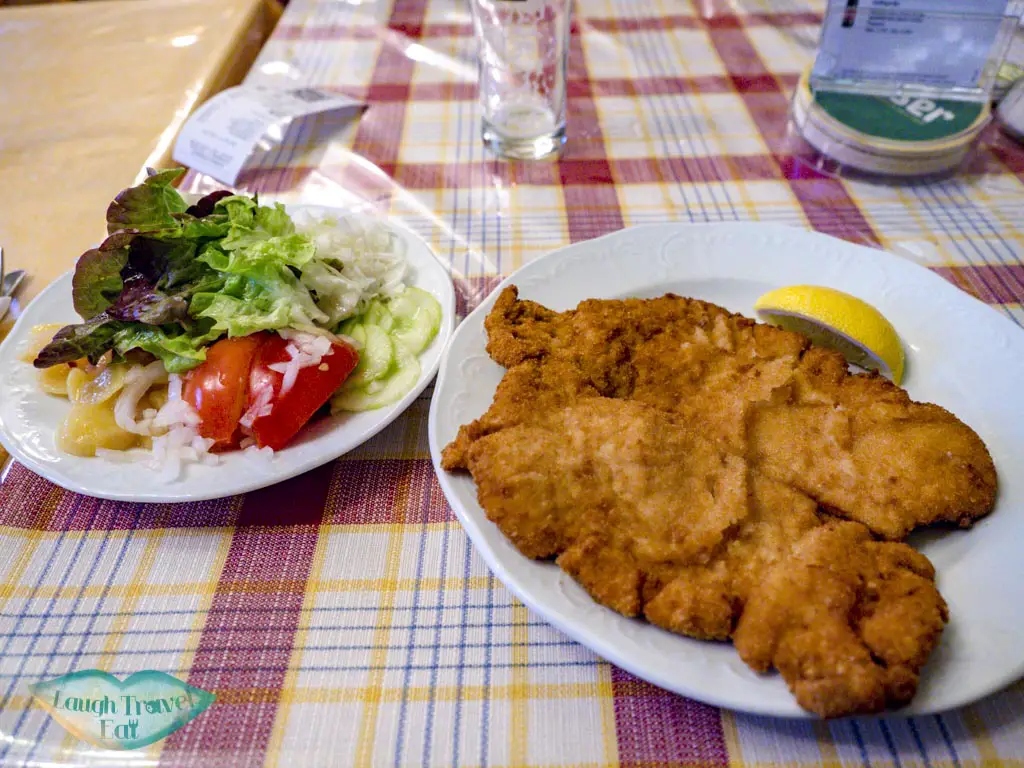
Address: Gluckgasse 5, 1010 Wien, Austria
Opening times: Mon – Fri 9:00 – 23:00
Kapuzinergruft – Royal Burial
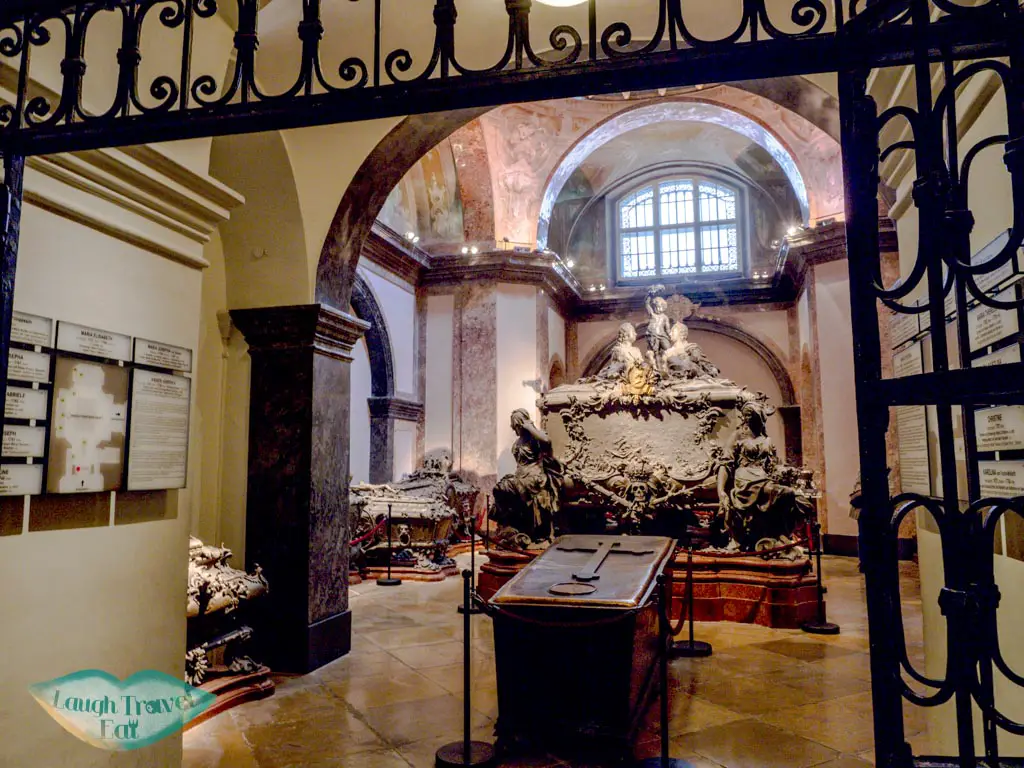
The burial vault for many of Habsburg, the Kapuzinergruft is only a few minutes from the Hofburg. It isn’t a big crypt, consisting of several interlined rooms and you can get a map on who is in which tomb.
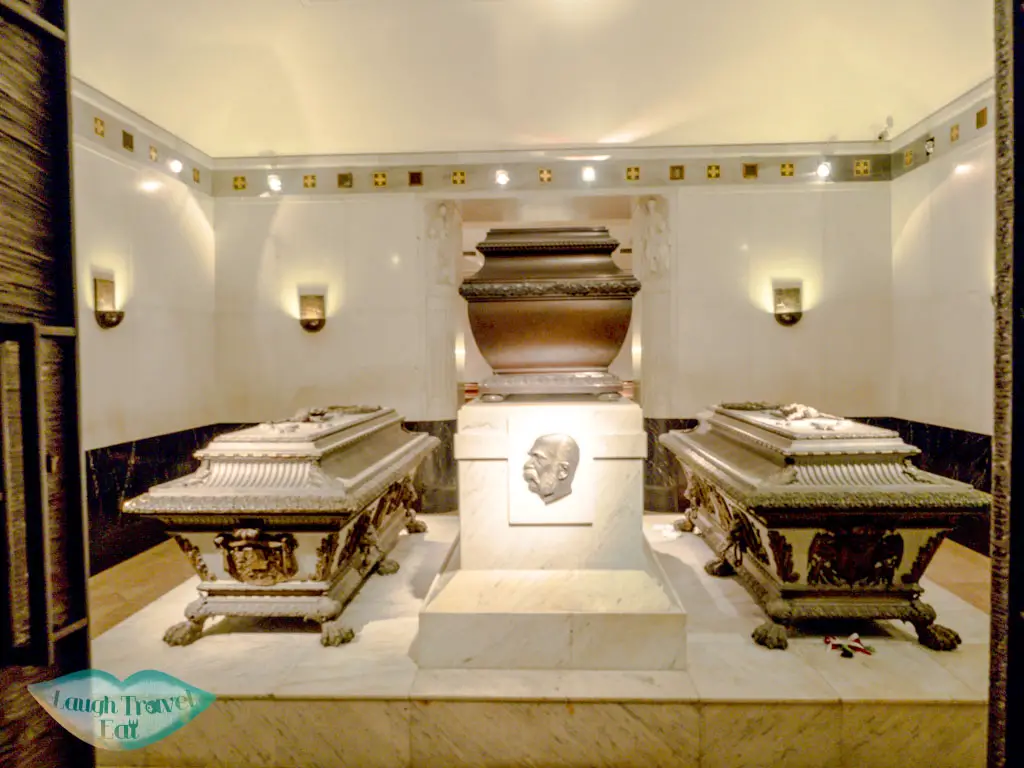
The most famous Habsburg buried here are the Empress Maria Theresa, Kaiser Franz Joseph I and Empress Elisabeth ‘Sisi’. There are no English translation on the few plaques around the crypt, but they offer guided tour at set times.
Address: Tegetthoffstraße 2, 1010 Wien, Austria
Opening times: 10:00 – 18:00
Admission: 6.5 euros, free with Vienna Pass (with fast track entry)
Without the guided tour, there isn’t much to see except a map marking important people’s burial chamber and location. It can be interesting after a visit to the Royal Apartments, but otherwise perhaps too morbid.
Nam
St Stephen’s Cathedral
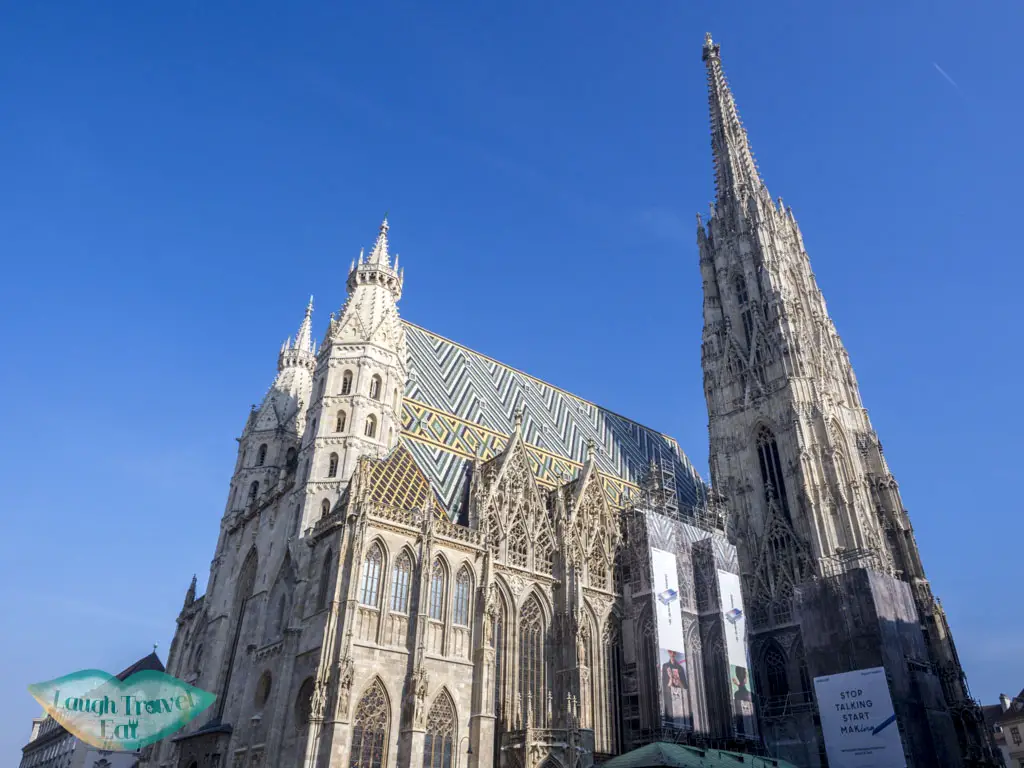
While the colourful church with tiled roof we see today was built in the early 18th century, the site had historically been home to two prior churches with the oldest dating back to the 13th century. The Roman Cathedral is a combination of Romanesque and Baroque style.
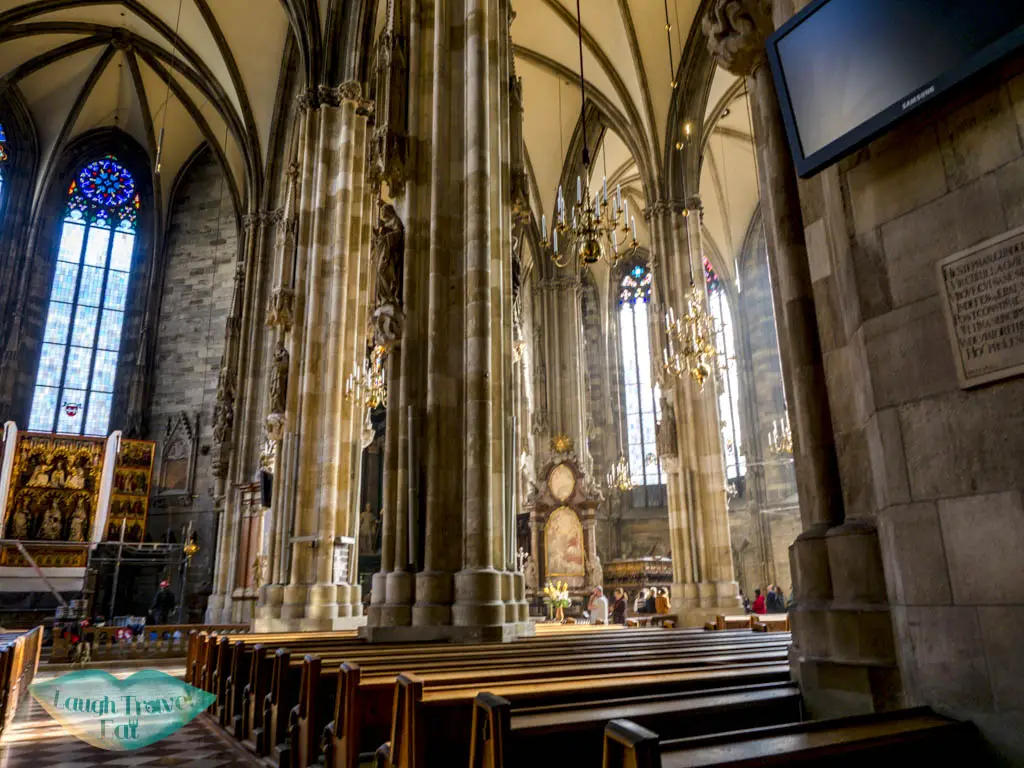
Its three navel interior is beautifully decorated, with the north and south tower available for visitors to climb at a fee. The general consensus is that the elevator ride up to the north, the shorter of the two, yield a much better view.
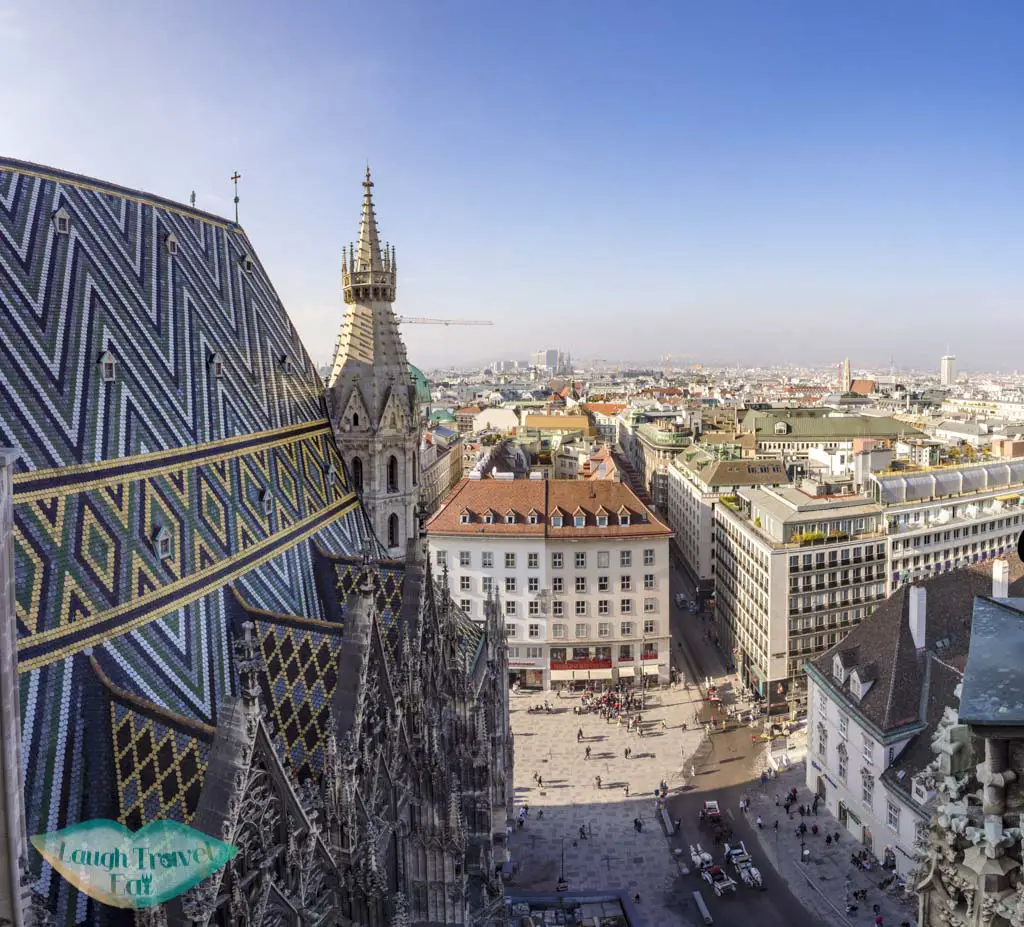
While the church is technically free to visit, access to the main area, the crypt, and both towers warrants a ticket. I ended up paying to go up to the north tower only and enjoyed the view.
Opening times: generally 9:30 – 17:00
Admission fee: free to enter the church, but for the interior 6 Euro, 2.50 children; catacombs 6 Euro, 2,50 Euro children with a guided tour; south tower (stairs only) 5 euros, 1.50 children; north Tower (lift) 6 euros, 2.50 euros
This cost for all of the admission is NOT included in the Vienna Pass but the north tower is worth the climb
Nam
Kunsthistorisches Museum
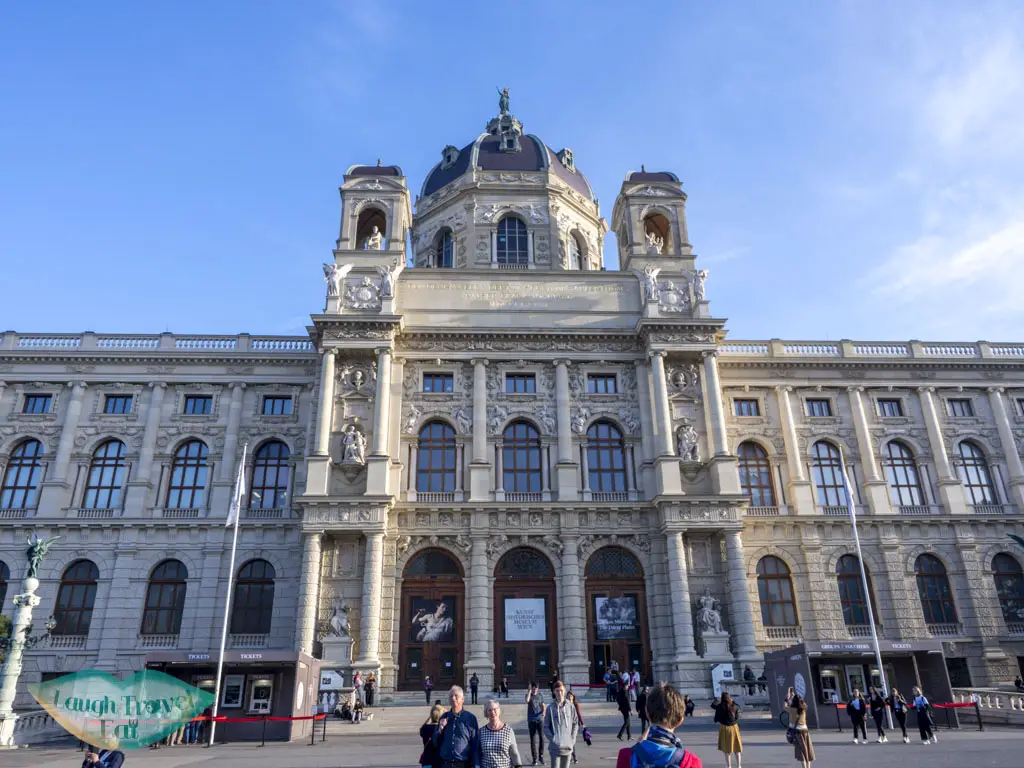
Next to the museum quarter is the Empress Maria Theresa Monument with the Kunsthistorisches Museum and Natural History Museum facing each other. The Kunsthistorisches Museum has 3 floors of exhibition, and their Egyptian exhibit is comprehensive and well done. However, the neighbouring Greek-Roman has only German.
Admission fee: 16 euros, concession 12 euros
Opening times: Thurs: 10:00 – 21:00; Fri – Weds 10:00 – 18:00
I’d also give it a miss unless you’re into Egypt
Nam
Vienna Giant Ferris Wheel
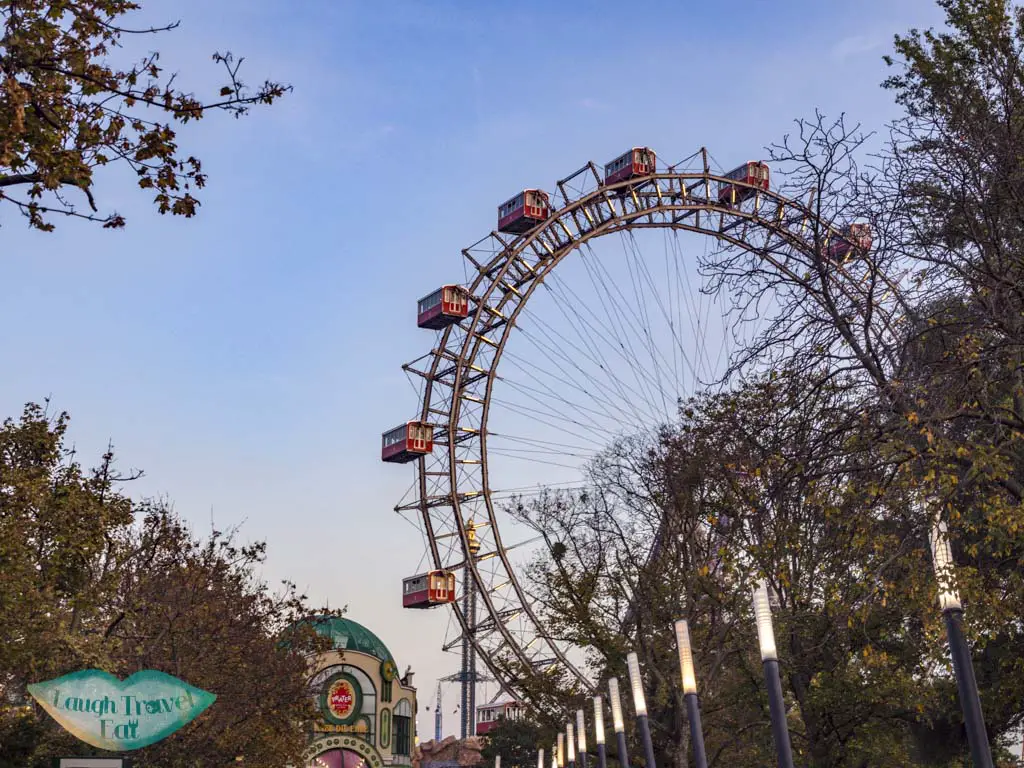
The Vienna Giant Ferris Wheel is one of the most popular attractions in Vienna. Located in the northeast corner of the edge of the old town, it is inside the Prater amusement park.
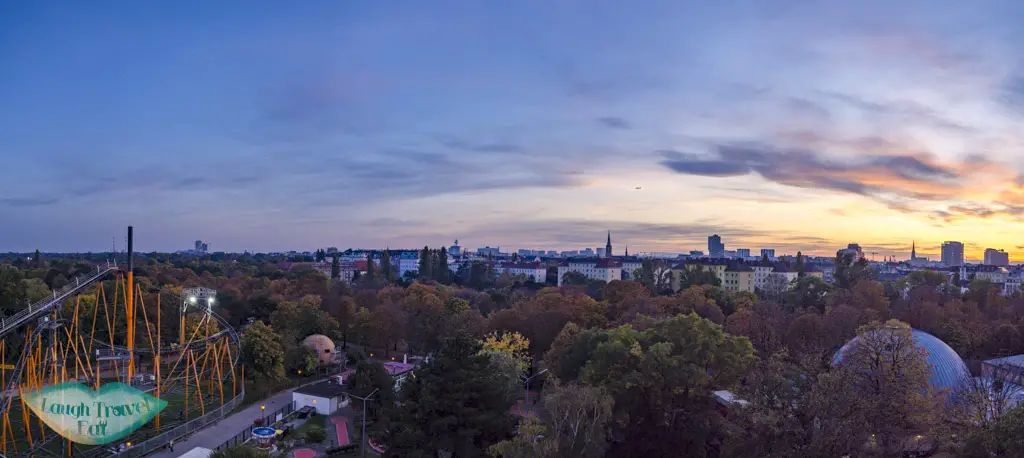
While it was smaller than I expected (since I’m from Hong Kong), it is significantly higher than the surrounding buildings at 65m and offers a stunning panorama of the city center.
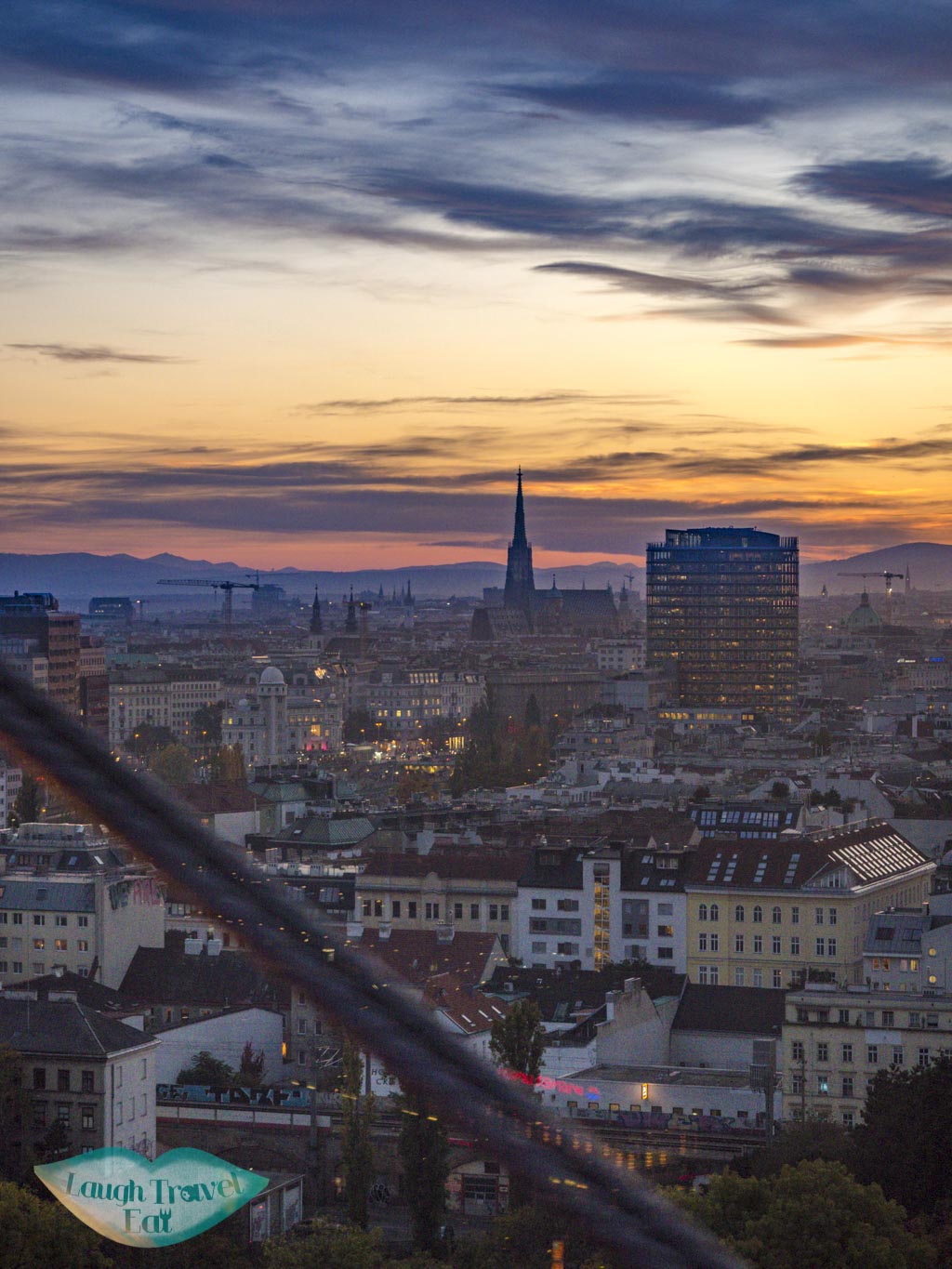
I went there just in time for sunset and the view is spectacular. There are several windows that open up vertically for a slit so you can get a photo without the glass, and it is pretty spacious.
Admission fee: 12 euros, free with Vienna Pass
Opening times: 10:00 – 22:00
Absolutely head to the Ferris Wheel for a spectacular sunset view
Nam
Burger De Ville
I ended up eating dinner at this little burger joint near my hotel. It’s a little pricier than I’d like but the bun was good, although the toppings were a little skimpy. However, I was able to get a takeaway quickly and ate in the comfort of my room! It is part of 25hours Hotel and only operates in the warmer months. You might want to check out the italian restaurant on site on visit another place!
Day 3
Schönbrunn Palace
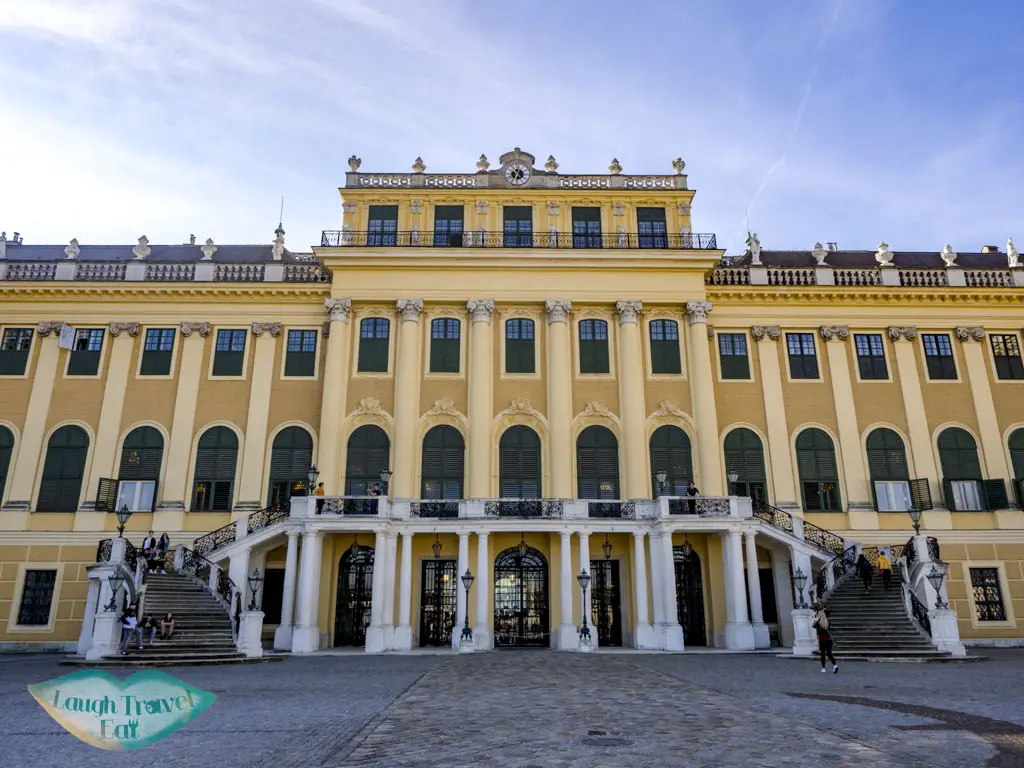
Built by Emperor Leopold I in the 17th century, Schönbrunn Palace replaced the summer palace that was destroyed by the second Turkish siege as a hunting lodge. The originally baroque building was remodelled under Empress Maria Theresa in the Rococo style and since used as the Habsburg summer palace. It opened to public visit in the late 19th century partially under Emperor Franz Joseph, then stopped due to world wars and abdication. It is now a must-see for visitors in Vienna. Bear in mind that Schönbrunn Palace is a complex with the palace, garden, Orangery, and Gloriette.
Schönbrunn Palace tickets
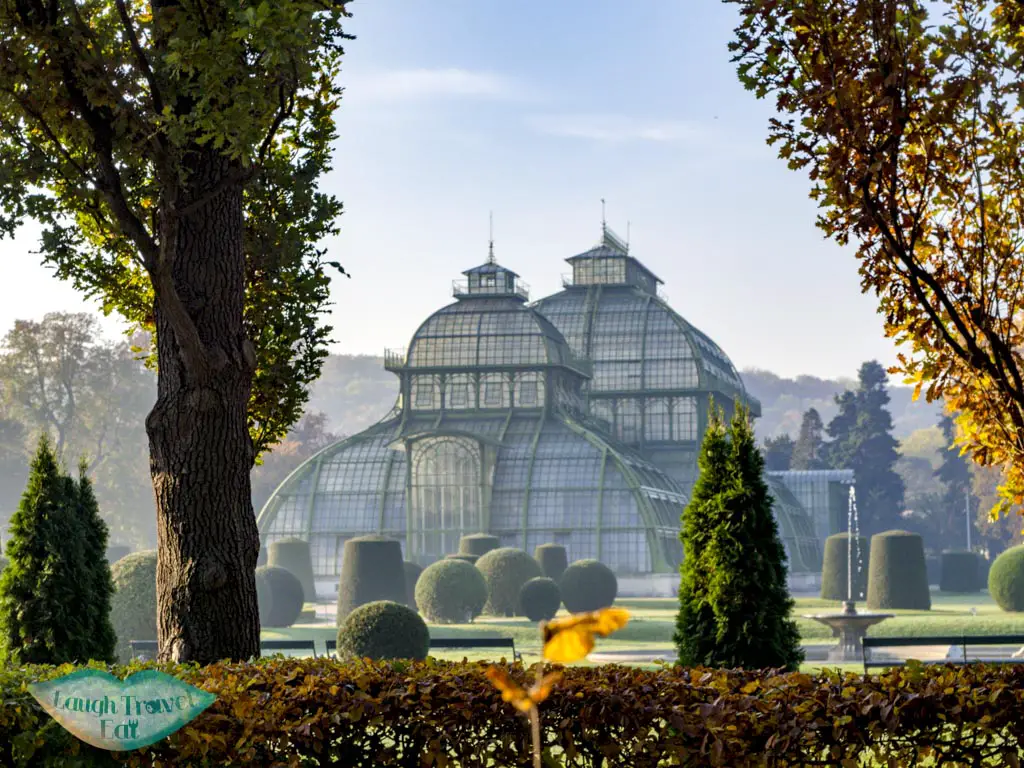
The grounds of Schönbrunn Palace is free to enter, only certain parts, including the palace, requires ticket. There are several ticket combos you can purchase for Schönbrunn Palace, which includes just a ticket to see some of the palace rooms to an all inclusive ticket for all attractions.
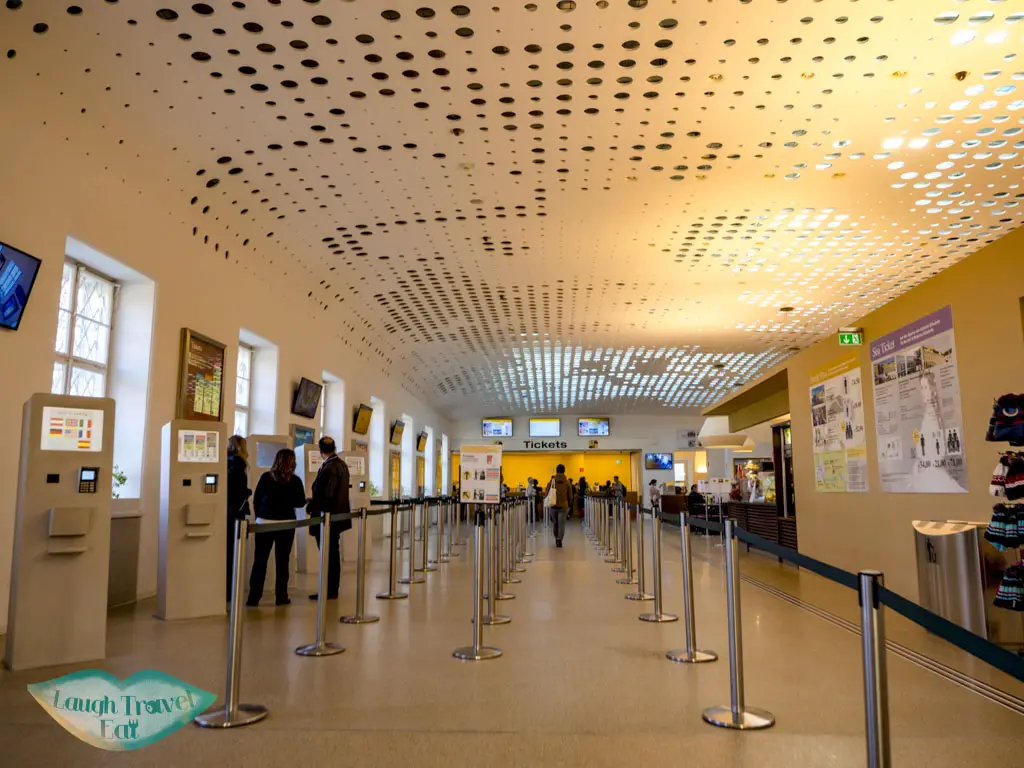
The main ticket office is by the front gate which is on the left side facing the palace. If you need to exchange your ticket with Vienna Pass then you must go there. Otherwise, head straight to the left wing where you can find ticket machines and entrance.
You must leave your bag and umbrella here at the free cloak room. The bathroom is free there but long queue. The main ticket office has bathroom downstairs at a fee of 50 cents
Audio guide is included and photos are not allowed.
Other attractions also sell tickets by their entrance so if you decide you want to visit them later you don’t have to return to this main office.
Ticket starts at 16 euros, with Vienna Pass including most of the attraction and the Grand Tour. Definitely roam the ground and do either the Imperial or Grand tour depending on budget as well.
Nam
Imperial tour and Grand tour of Schönbrunn Palace
The former includes only 22 rooms while the latter includes 40 rooms in the palace. Depending on how much time you have to see Schönbrunn Palace, I think it’s better to see the Grand Palace tour. Photos are not allowed inside the rooms, but an audio guide is included. There are some repeat of Habsburg Imperial Palace material in Franz Joseph and Elizabeth’s apartment, but it’s interesting to see how the counterpart of their apartments vary between Schönbrunn Palace and Hofburg. And the Great Gallery is a cavernous room adorned with fresco and chandeliers that made me want to stay and stare for a good five minutes.
Note: The imperial tour ends after the Great Gallery and the grand tour continues (so keep your ticket)
There are a few notable rooms in the Grand Tour, the Chinese Room with rice paper wall where negotiation for abdication of the Habsbury takes place, the Million Room with rosewood and Indo Persian portrait, and a ceremonial state bed from Empress Maria Theresa’s time.
Apple Strudel Show
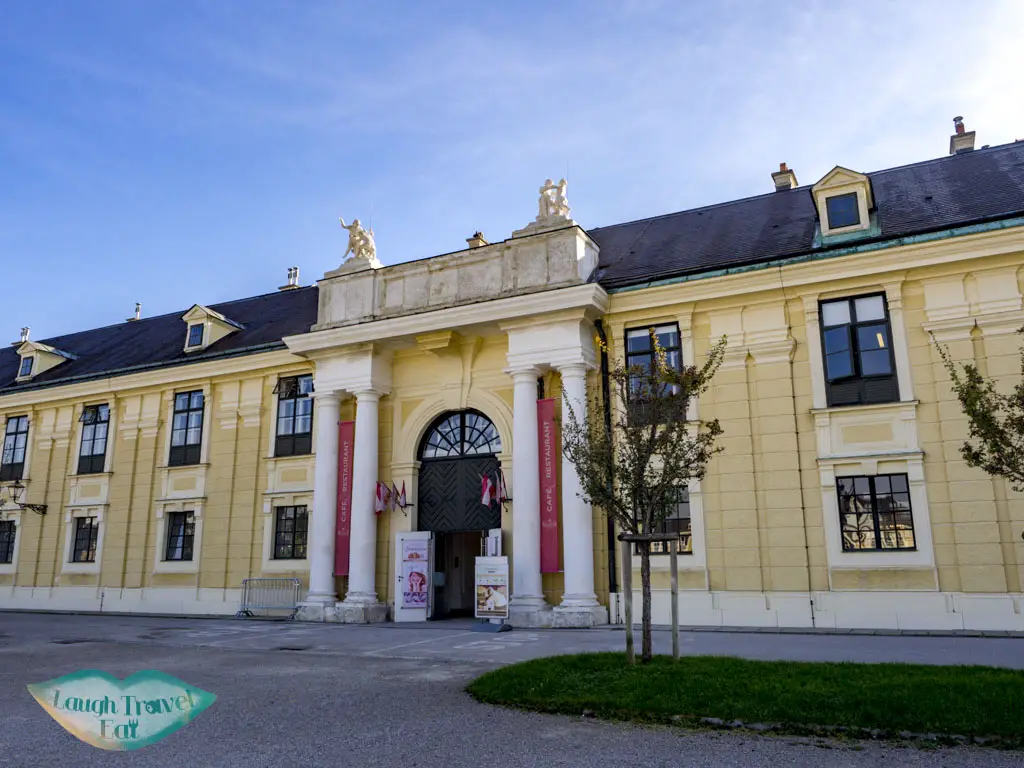
Hungry after seeing all the palaces? I know I was! Schönbrunn Palace is also home to the Apple Strudel Show, located at the basement of the Hofbackstube Schönbrunn (a cafe restaurant right of the palace facing gate between the palace and the main ticket office).
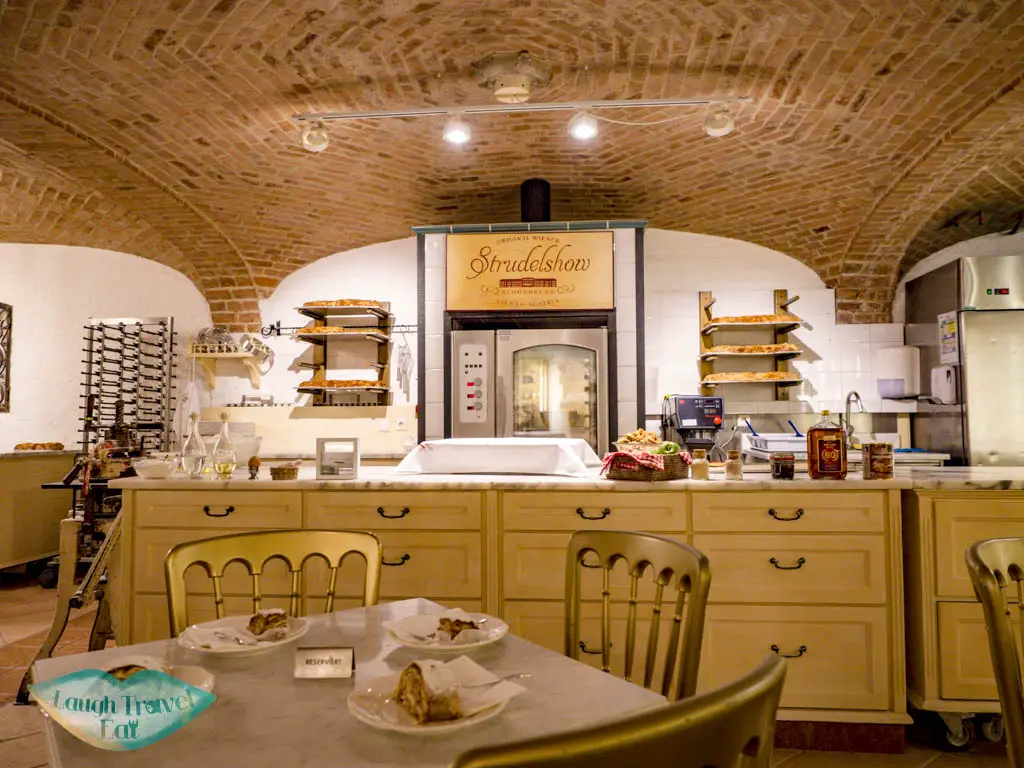
Tickets are sold ten minutes before it starts which is on the dot hourly from 11 to 4pm. You can opt for getting a small taster, a full piece of apple strudel with drinks, before getting seated and waiting for the show.
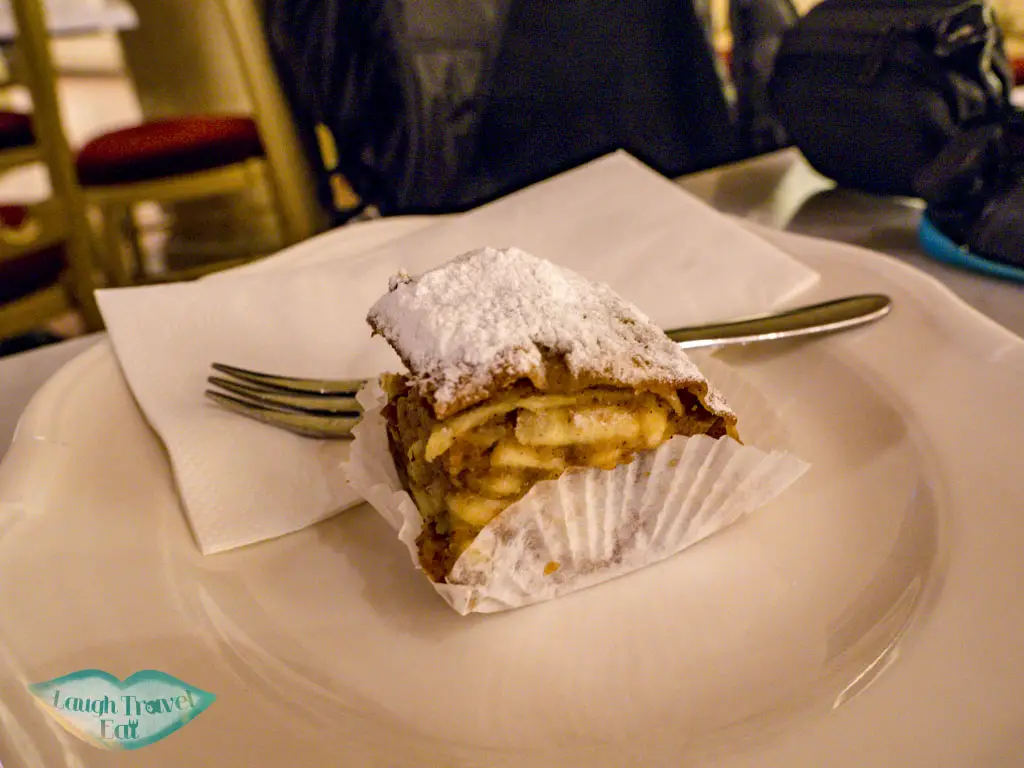
It seems that the front row is already reserved, but if you arrive early the side tables and second row isn’t bad either. Our apple strudel chef was a humorous man who peppered us with jokes and expertly showed us how apple strudel is made.
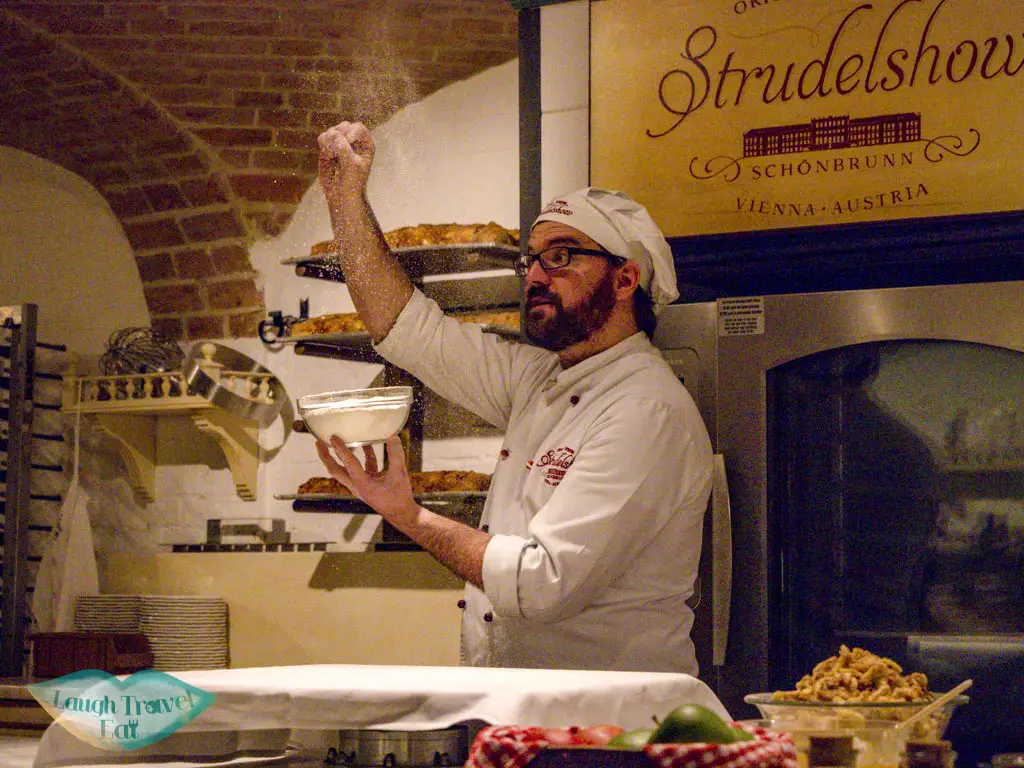
The origin of the pastry crust is from Turkey, filling is from Hungary, which are prepped and ready to be turned into a delicious dessert. The most spectacular part is when he spinned the pastry and stretched it thin enough to read newspaper under!
Note: free bathroom here
Admission fee: free with Vienna Pass, and you get a taster
Daily 11:00-16:00 at the top of the hour
Duration: approx. 15-20 min.
Privy Garden
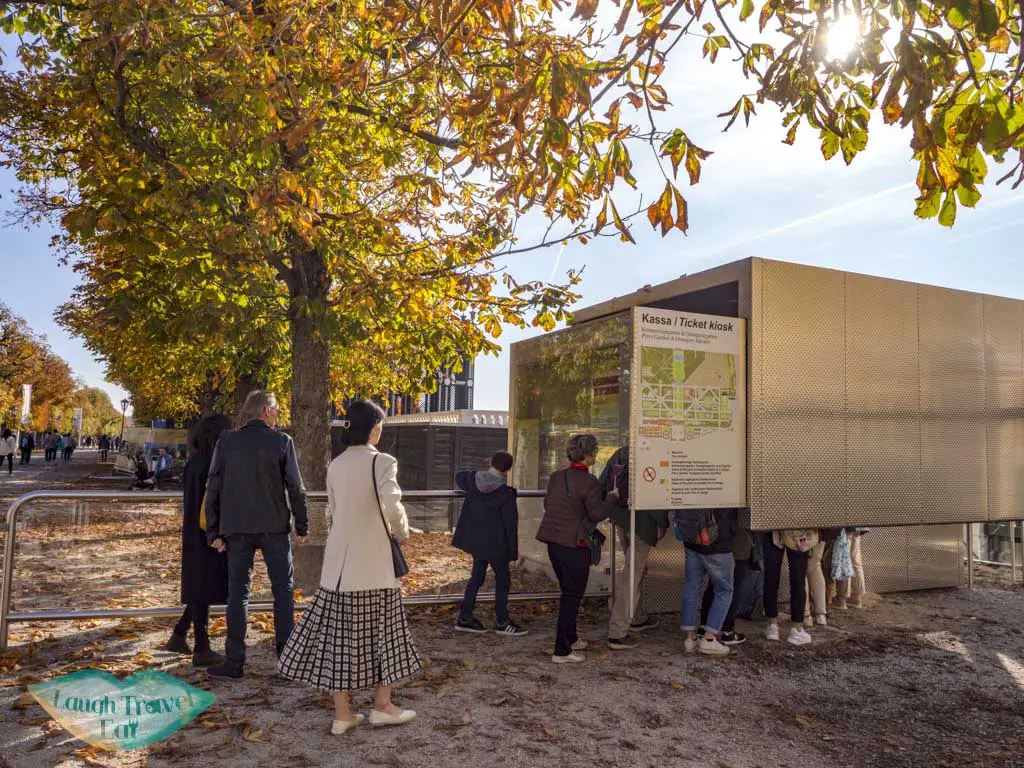
On the east side of the palace is the Privy Garden with manicured flower beds and symmetrical pergola walkways that is covered by gorgeous red leaves in the autumn. You can see it from the garden already, but you’d need a ticket to walk under the pergola.
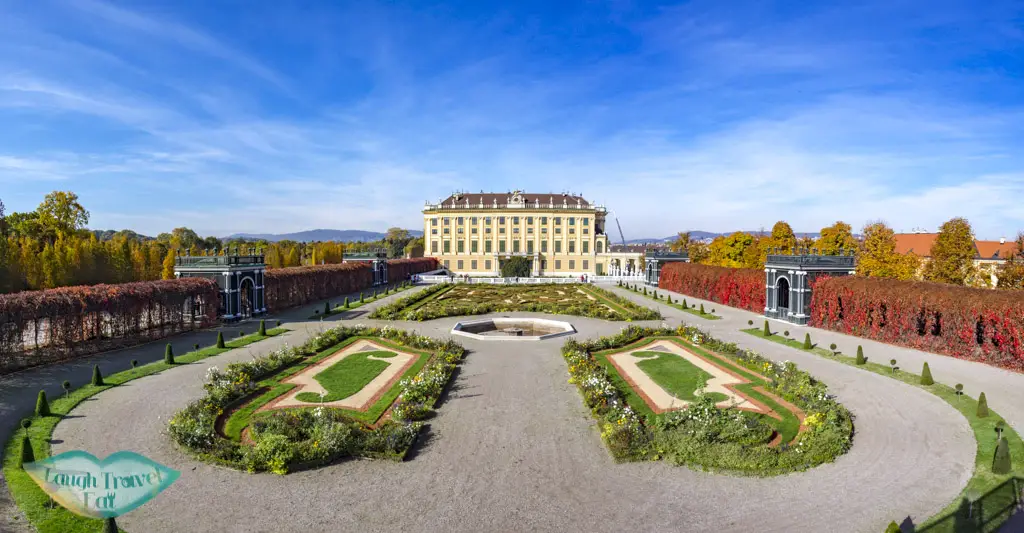
Admission fee: 4.5 euros for adult, included in the full day pass and also Vienna Pass
Opening times: only between April to early November
Orangery
The Orangery is steps away from the Privy Garden and home to citrus fruits and other exotic plants. The building itself is a one-storey glass house with garden outside that are teeming with plants in the summer. However, it is empty in the winter so not worth going to, unless you have a all-inclusive pass.
Admission fee: 4.5 euros for adult, included in the full day pass and also Vienna Pass
Opening times: only between April to early November
Gloriette
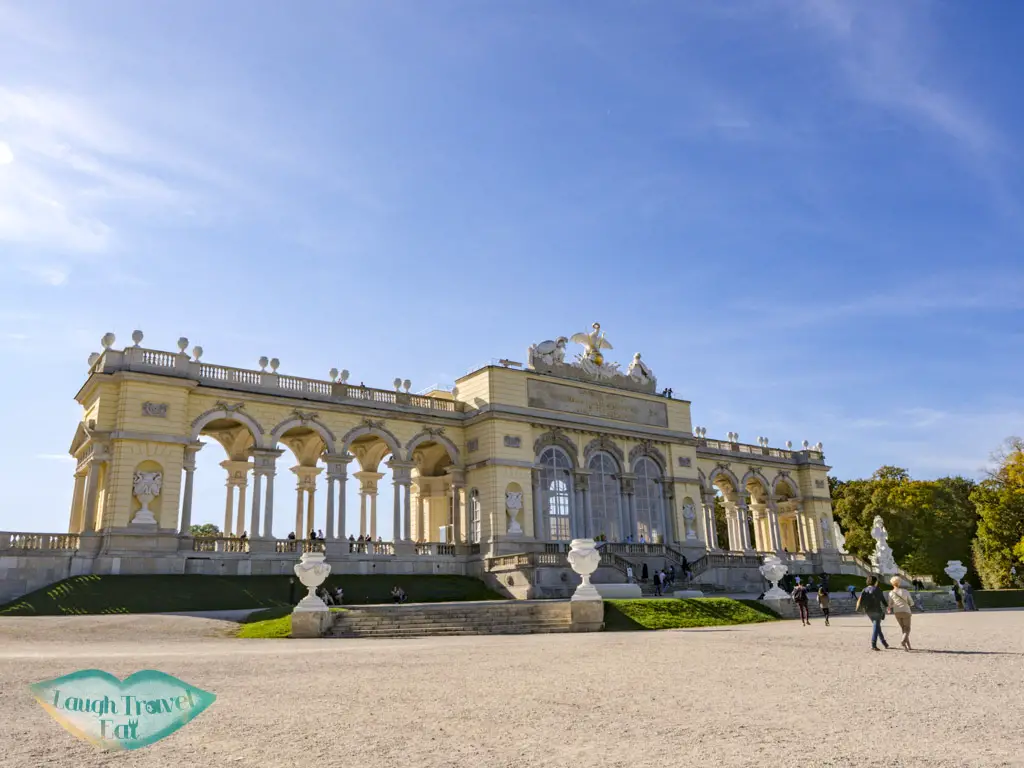
Located on a hill on the grounds north of Schönbrunn Palace, the Gloriette is a building best described as a freestanding arch with symmetrical loggia either side. It was the last part of the Schönbrunn Palace to finish at the end of the 18th century.
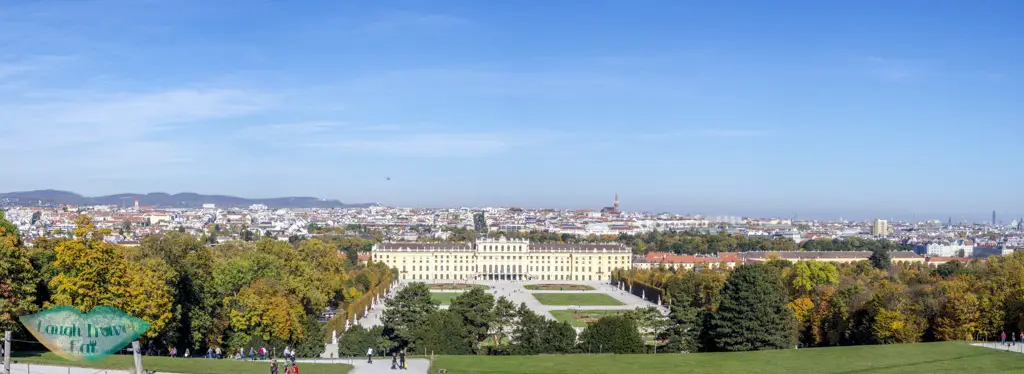
It faces a small pond that and overlooks the Schönbrunn Palace and Vienna. You can climb up to the terrace (which requires a ticket) or just admire the view from the loggia. There is also a cafe where you can find refreshment.
Restaurant Schönbrunner Stockl & Dinner Theater
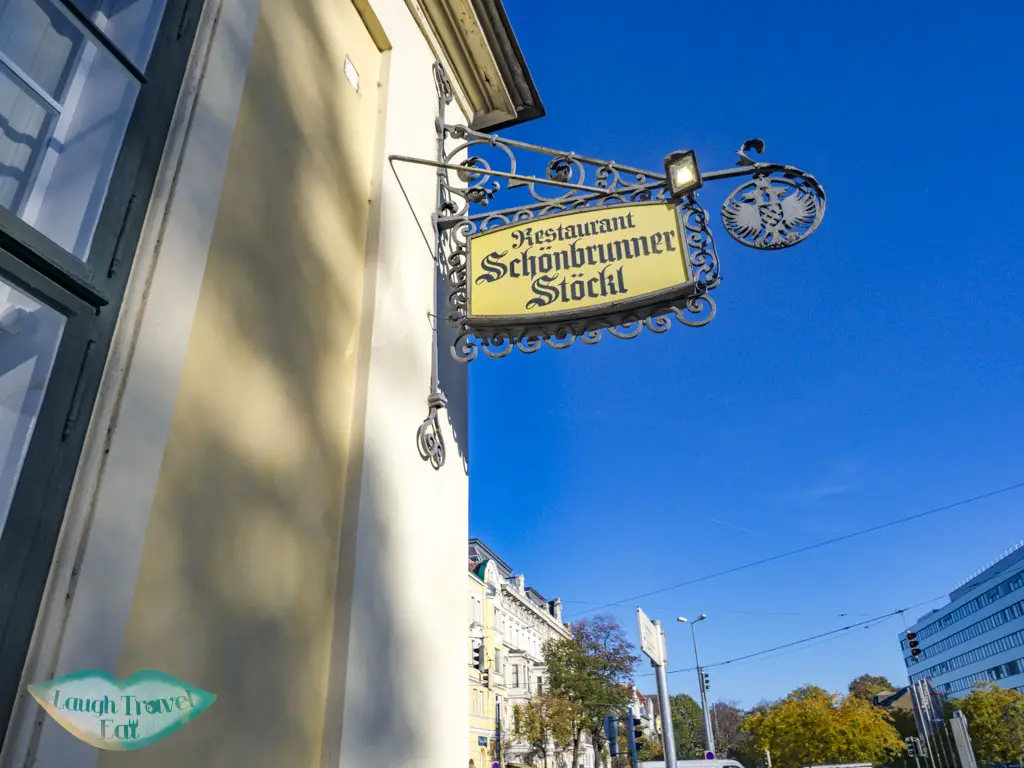
I couldn’t decide on where to eat inside the Schönbrunn Palace, so I ended up eating at this theater-themed restaurant right on the edge of Schönbrunn Palace near the Schönbrunn U-Banh.
I had the beef tartar, Viennese style, and it was pretty good. The decor is delightful despite me not recognising the theme, and the service was friendly enough.
Address: Schloss Schönbrunn am Meidlinger Tor Navy:, Schönbrunner Str. 309, 1130 Wien, Austria
Opening times: 10:00 – 23:00
Votivkirche
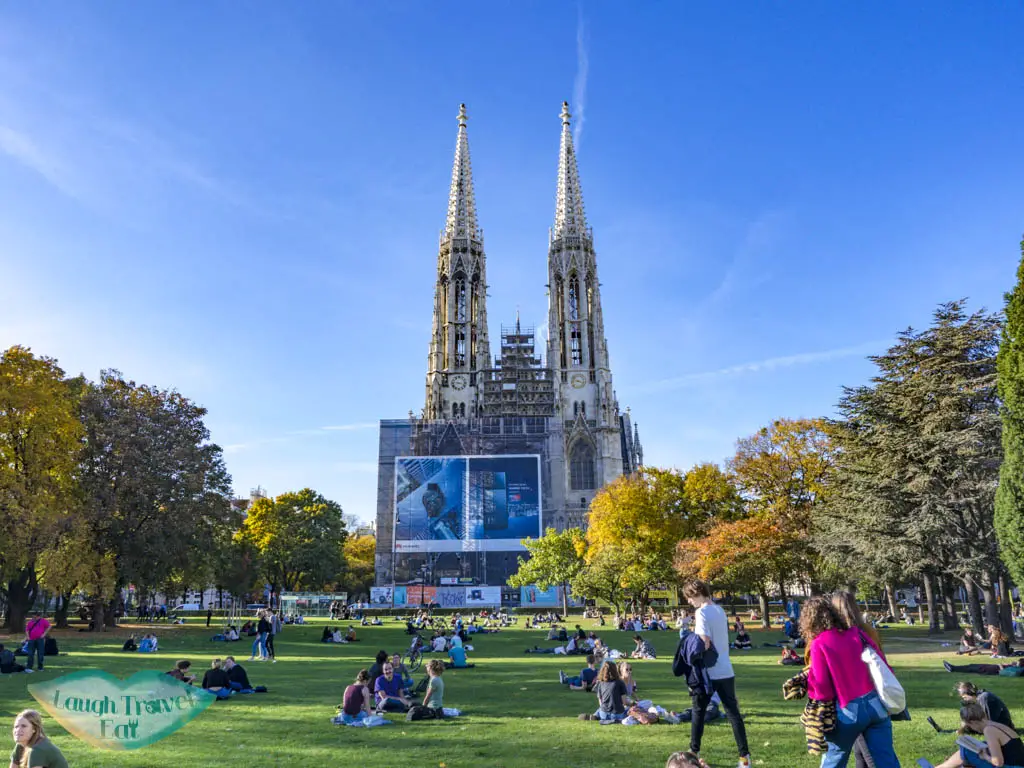
A neo-gothic church with two spires that are one of the most distinctive structures in the Vienna skyline. It was built to celebrate the life of Emperor Franz Joseph after a failed assassination.
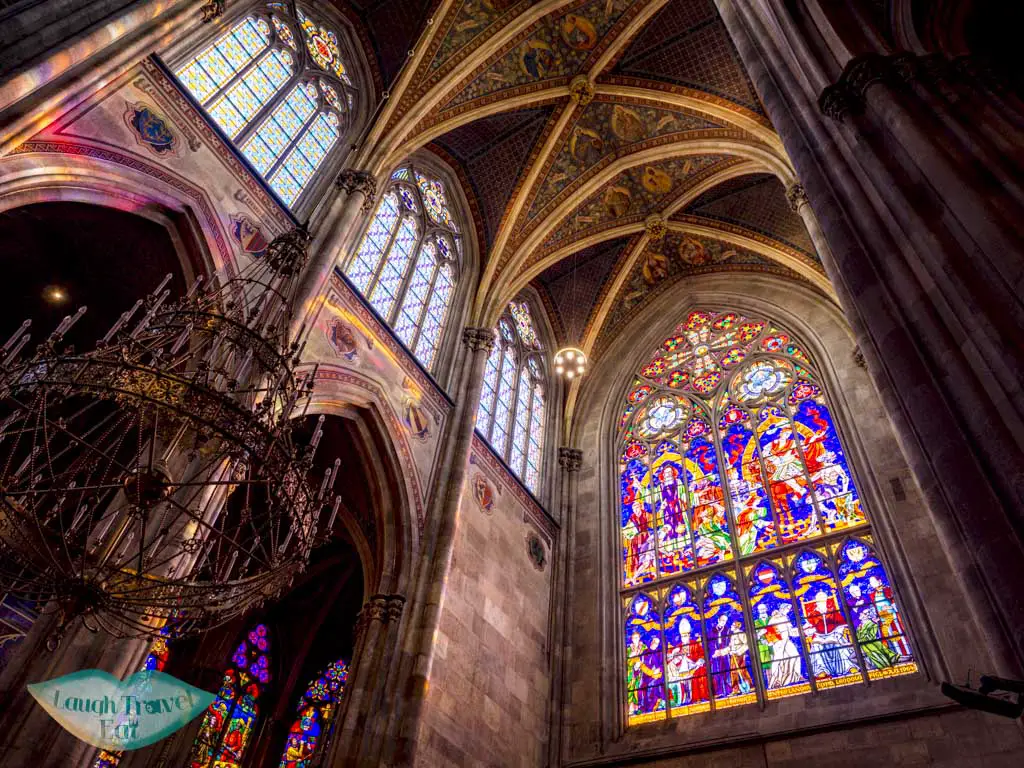
The church is free to visit and have some beautiful stained glass, although the exterior was under construction on my visit.
Neni at the Naschmarkt
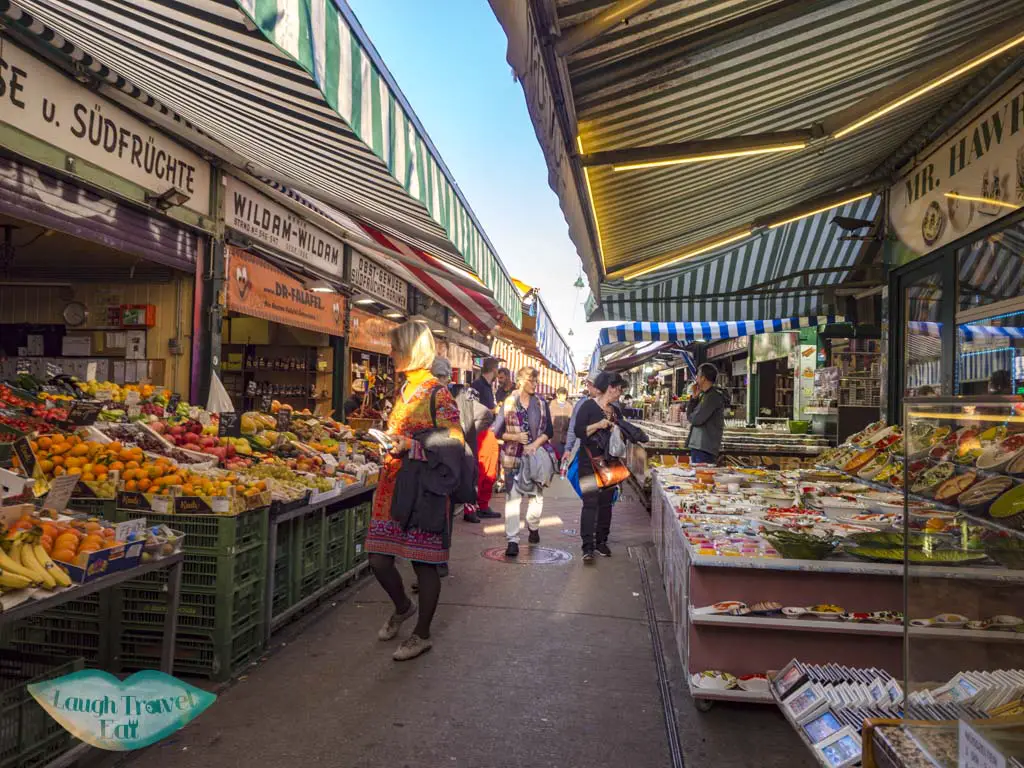
The Naschmarkt is the most famous market in Vienna, known for selling exotic spices from middle east and Asia. not so coincidentally, there are many lovely little restaurants inside and NENI caught my eye with its beautiful decor. Serving middle eastern food, I took advantage of the still warm weather and sat outside.
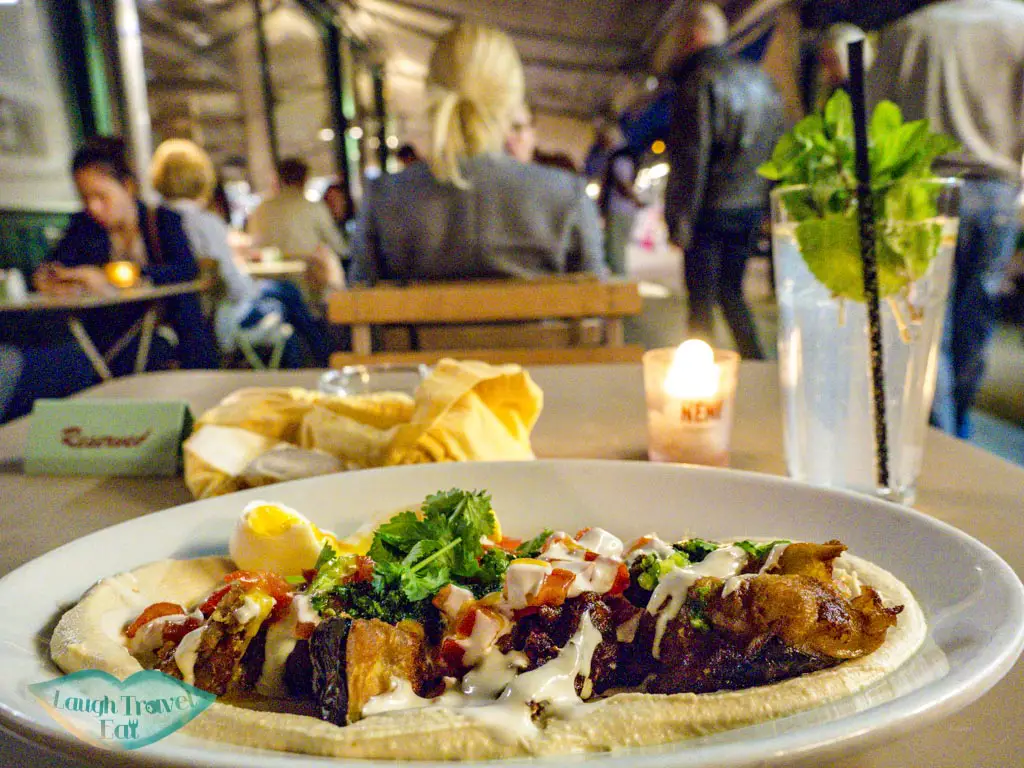
Address: Naschmarkt 510, 1060 Wien, Austria
Opening times: Mon – Sat 8:00 – 23:00
Where to stay in Vienna
25hours Hotel Museum Quarter
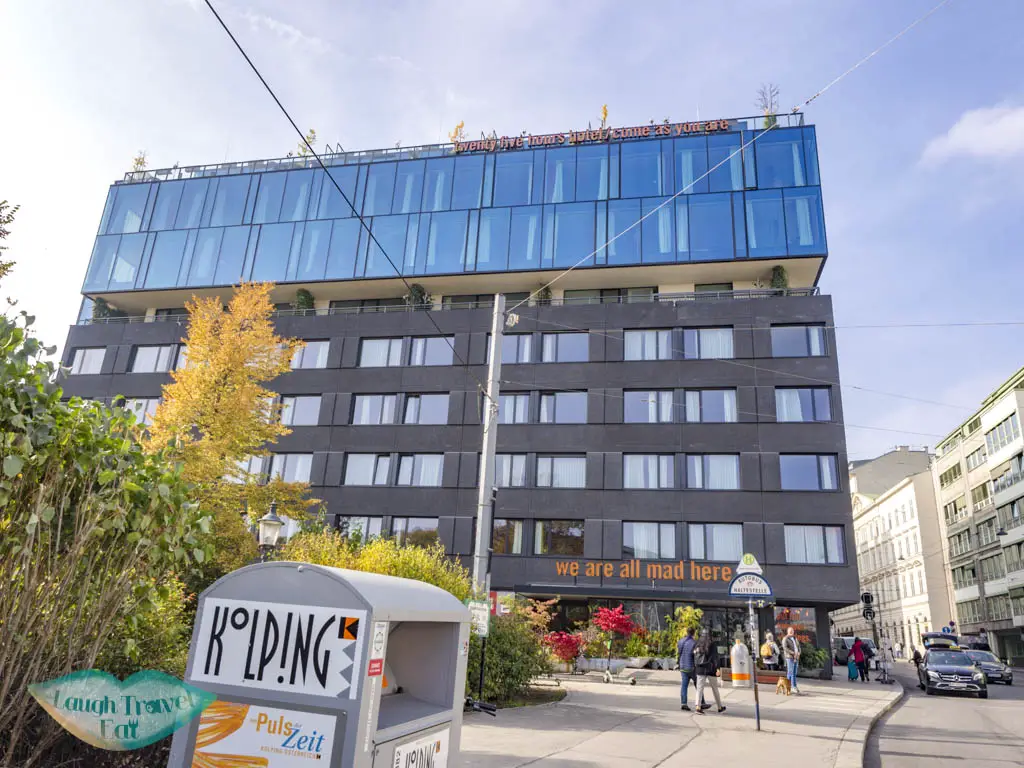
The three day itinerary is exhausting and so I decided that it warrants a good hotel. Only a few minutes walk from the Volkstheater U Banh Station, it is within walking distance to most of the attraction or just a few short stops on the metro away.
The quirky and modern design is one of the best things about it and my room features a unique mural of a clown and companions. It’s comfortable, it’s spacious, and the breakfast buffet is delicious with pain au chocolate and fresh orange juice – two of my most favourite things!
Note: I received a media rate for the rooms but all opinions are my own
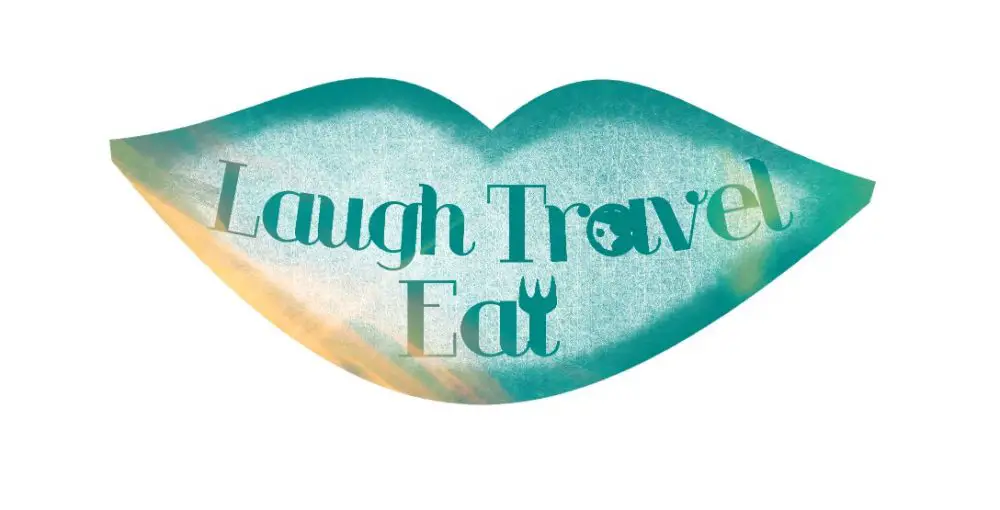

 中文 (香港)
中文 (香港)
